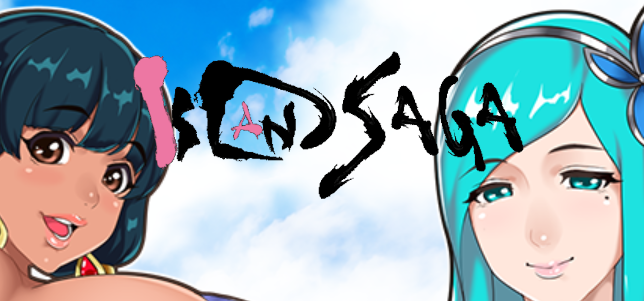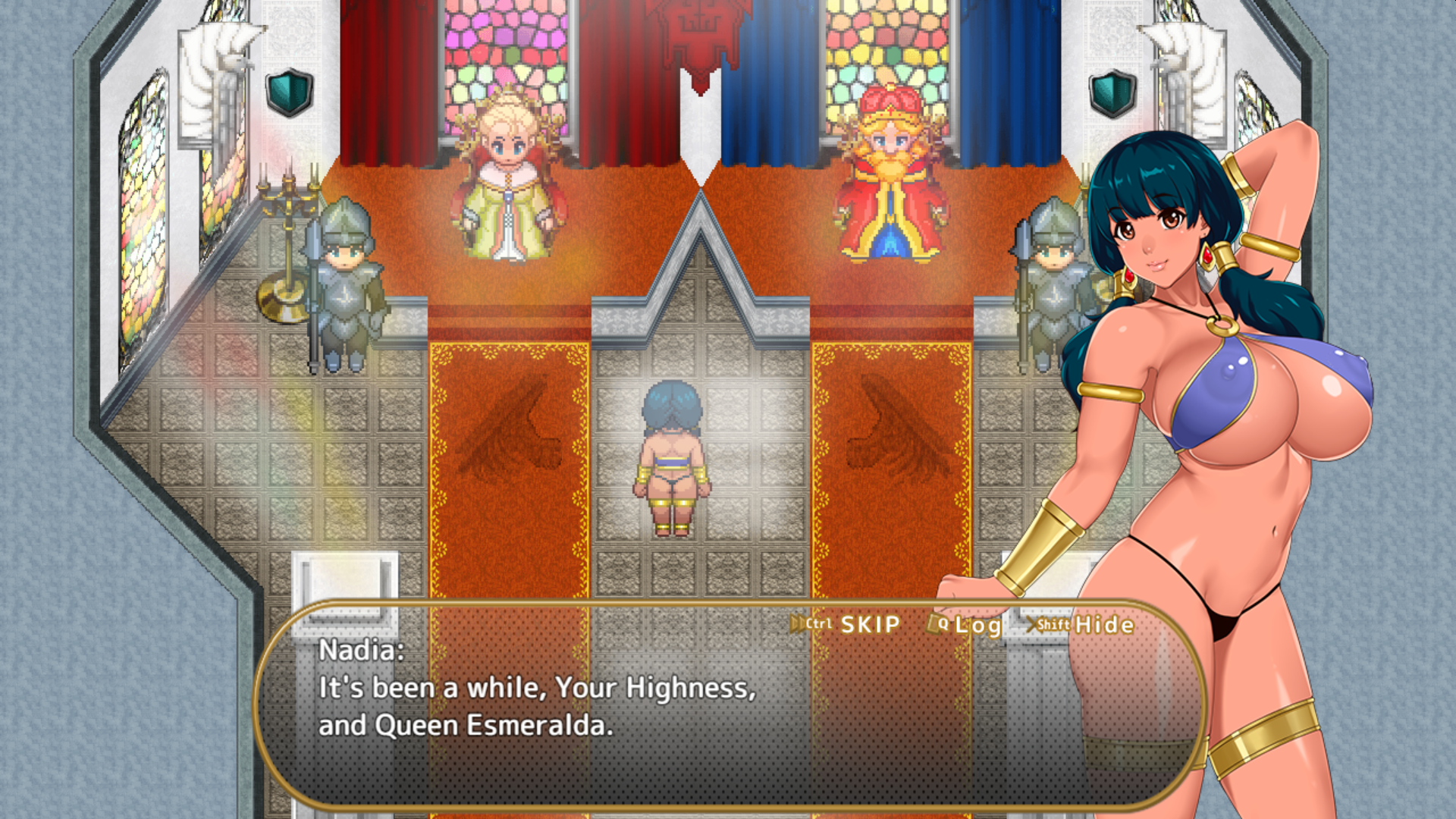An interesting combat system weighed down by poor writing and sexual fetishes hanging off it like oversized breasts.
Type: Single-player
Genre: Dating Simulator,
RPG, Sexual Content
Developer: Kamichichi
Publisher: Remtairy
Release date: 19 May, 2020


Intro
Island SAGA is the latest game translated by Remtairy, the same company that translated Monster Girl Club Bifrost. They are listed as a developer, but they are translating an existing Japanese game, so there is no connection to these games except their translators. Nevertheless, in spite of my aversion to the… obvious Someone Else’s Fetish in this game, I thought reviewing this game would be able to make for an interesting contrast against Bifrost because of the things I’d read the others in the forums say about it. Specifically, that it had no NTR or “hardcore rape”, and that it would be a “palette cleanser”, that it’s a lovey-dovey type of game…
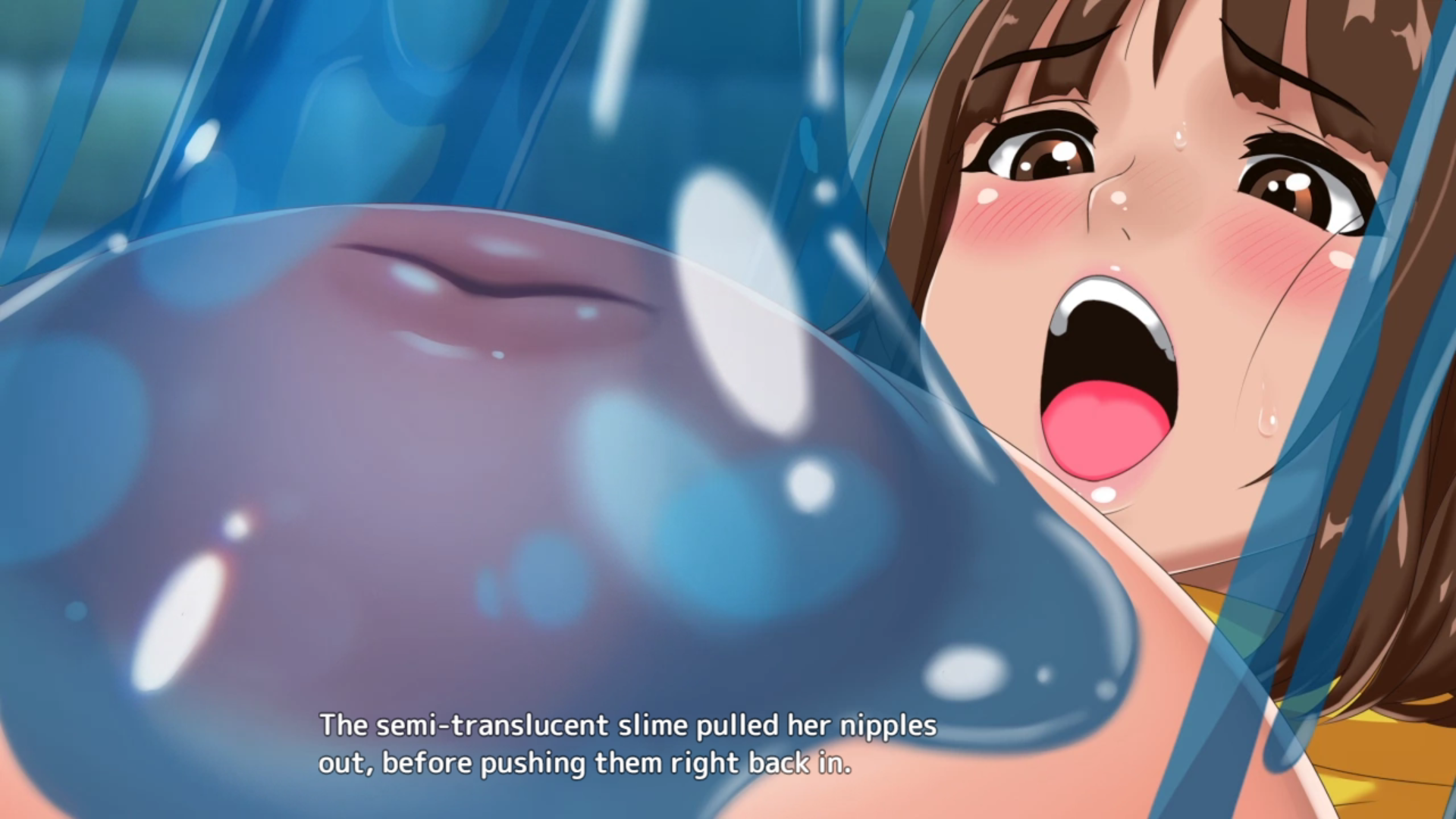
…
So Internet, I think we need to have a talk…
The Patch
So I should probably get this out of the way right off the bat: The R-18 patch is found here. In the past, I’ve talked about how some games can be played and enjoyed even without the patch. This is not one of those games. See if you can spot the difference between the patched and unpatched versions even without getting into the porn parts:
Yes, that’s right, kids, they censored the basic character sprites and removed the dialogue character sprites entirely! I mean, I can very clearly see why, since you can blatantly see the nipple through the fabric, but the game in its unpatched state has three of the main characters covered in what appears to be upholstery patterns in one of those unmoving pattern things I find an absolute eyesore. Hence, I’m not even going past the intro to show the differences. If you don’t want to see giant anime boobies, you should just keep on walking, because oh boy is it unavoidable here.
Sexual Content
In previous reviews, I’ve mentioned that in dating sims, the love interests tend to cover as broad a spectrum as possible to try to make a game appeal to as wide an audience as possible, while the main character tends to be the lowest common denominator character who only has what personality traits they presume anyone who would play a game like theirs would have. Well, that’s only for the developers that are looking to sell to the largest audience possible.
This game is basically just The Developer’s Fetish. Whereas Bifrost had shy girls, aggressive girls, sadist girls, masochist girls, huge girls, short girls, really really short (as in fairies that fit in your hand) girls, reptilian girls, plant girls, flat and well-endowed, with a veritable rainbow of sexual content including fetishes that aim for a really niche audience, Island SaGa basically homes in on just a couple fetishes and goes hog wild on them.
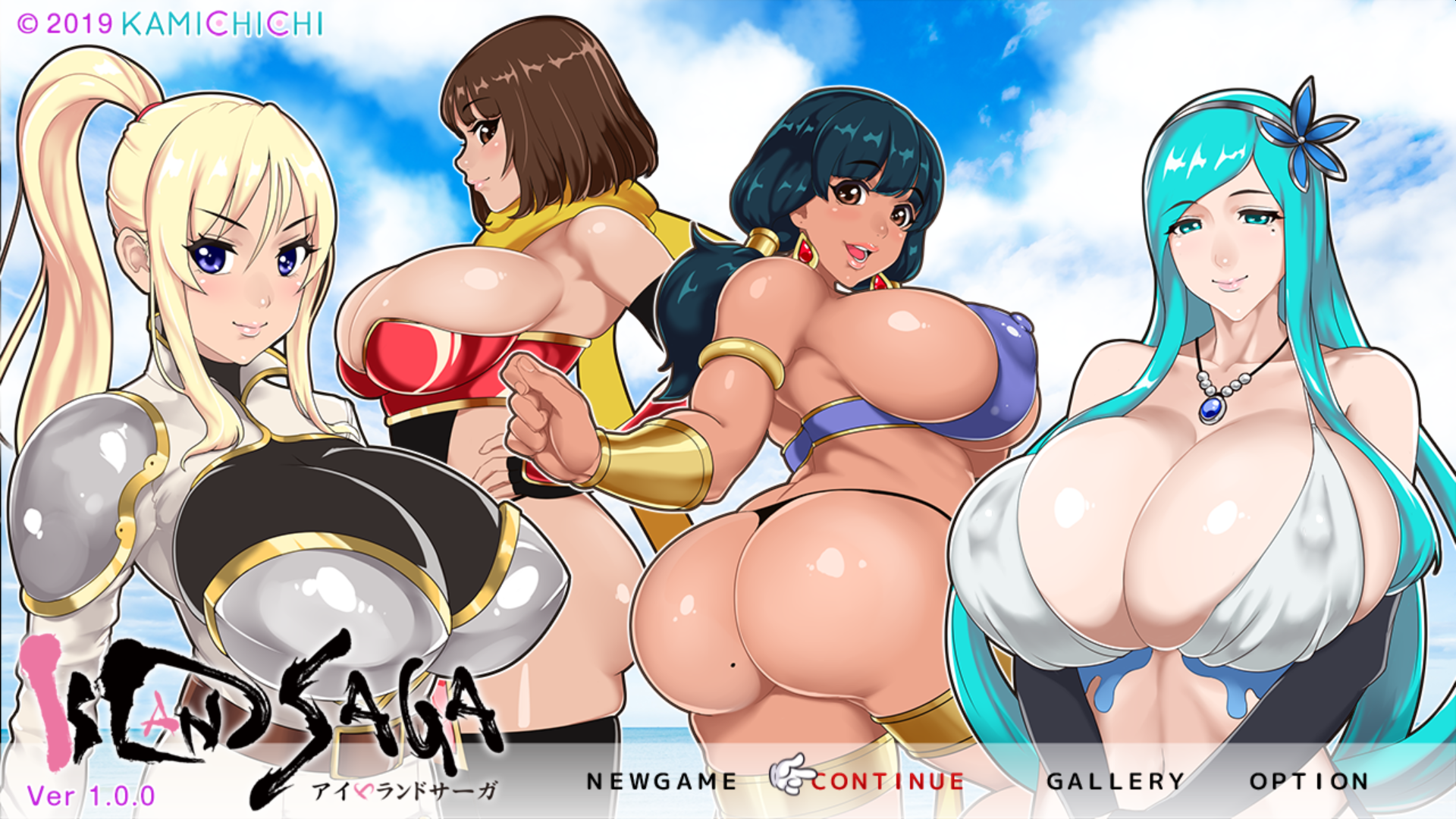
(I’d also like to just point out here that “Kamichichi” literally means “Divine Breasts”, and the Cs in the Dev’s logo have nipples.)
Remember how I said that the protagonist acts as the lowest common denominator assumption of what the developer assumes about their audience? Well, these are the kinds of choices you get to make in this game:
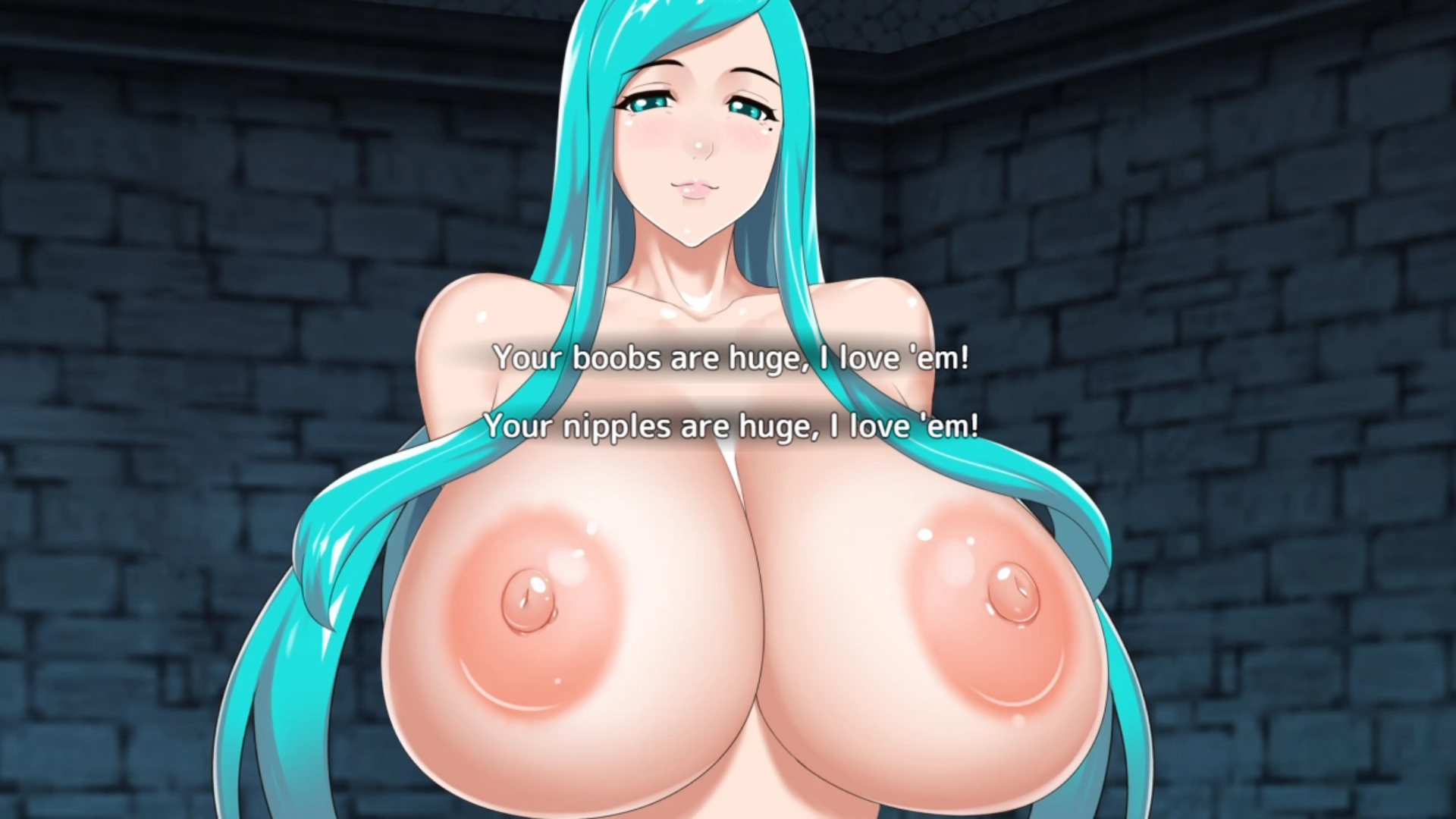
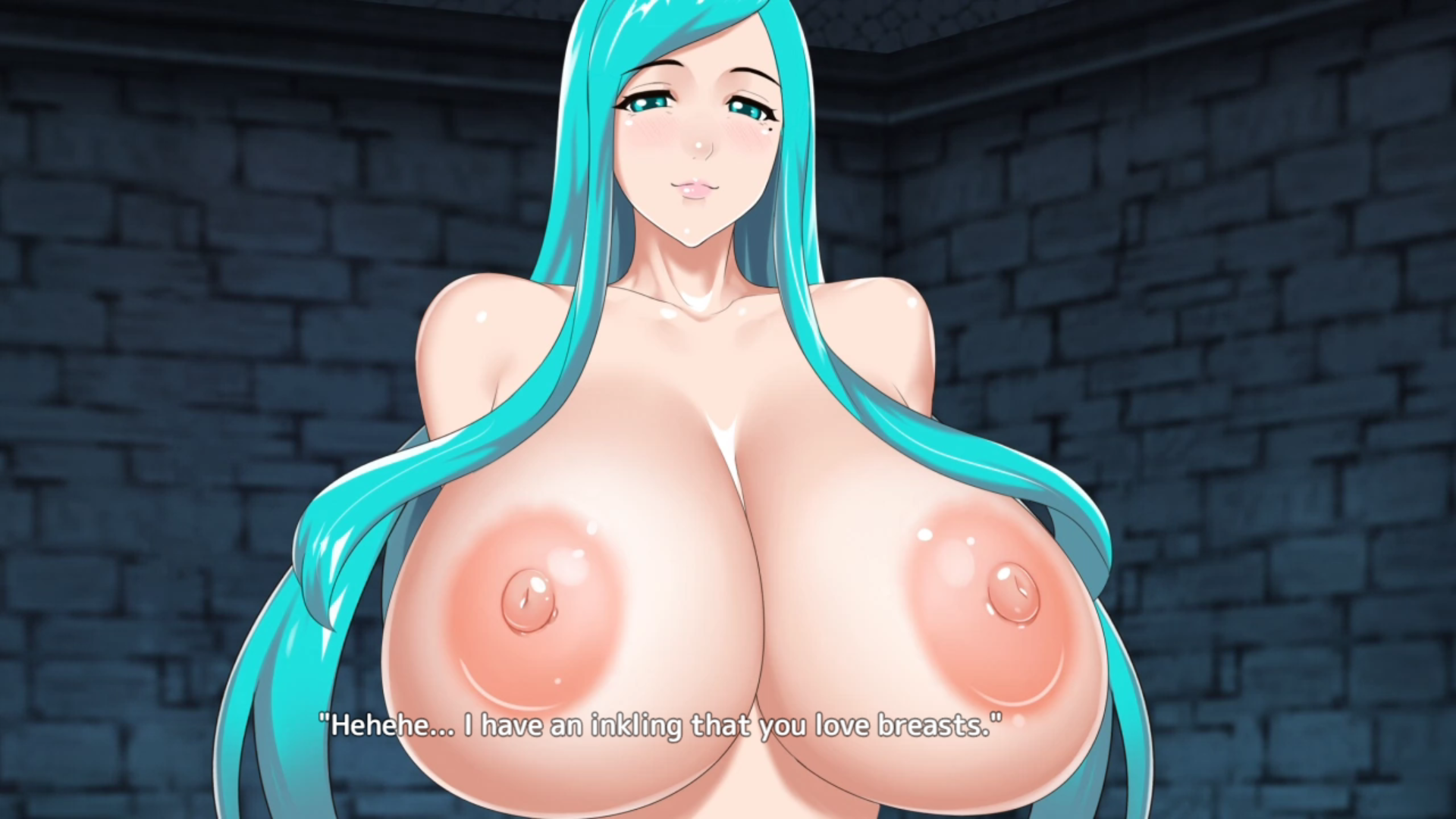
However, things don’t JUST stop with giant breasts. Oh no, The Developer’s Fetish is much more niche than that! The slime molestation image I lead off with? Those images are animated, and that scene had the slime sucking Sakura’s inverted nipples in and out being animated. The slime wasn’t interested in any other girl, apparently, just the inverted nipples.
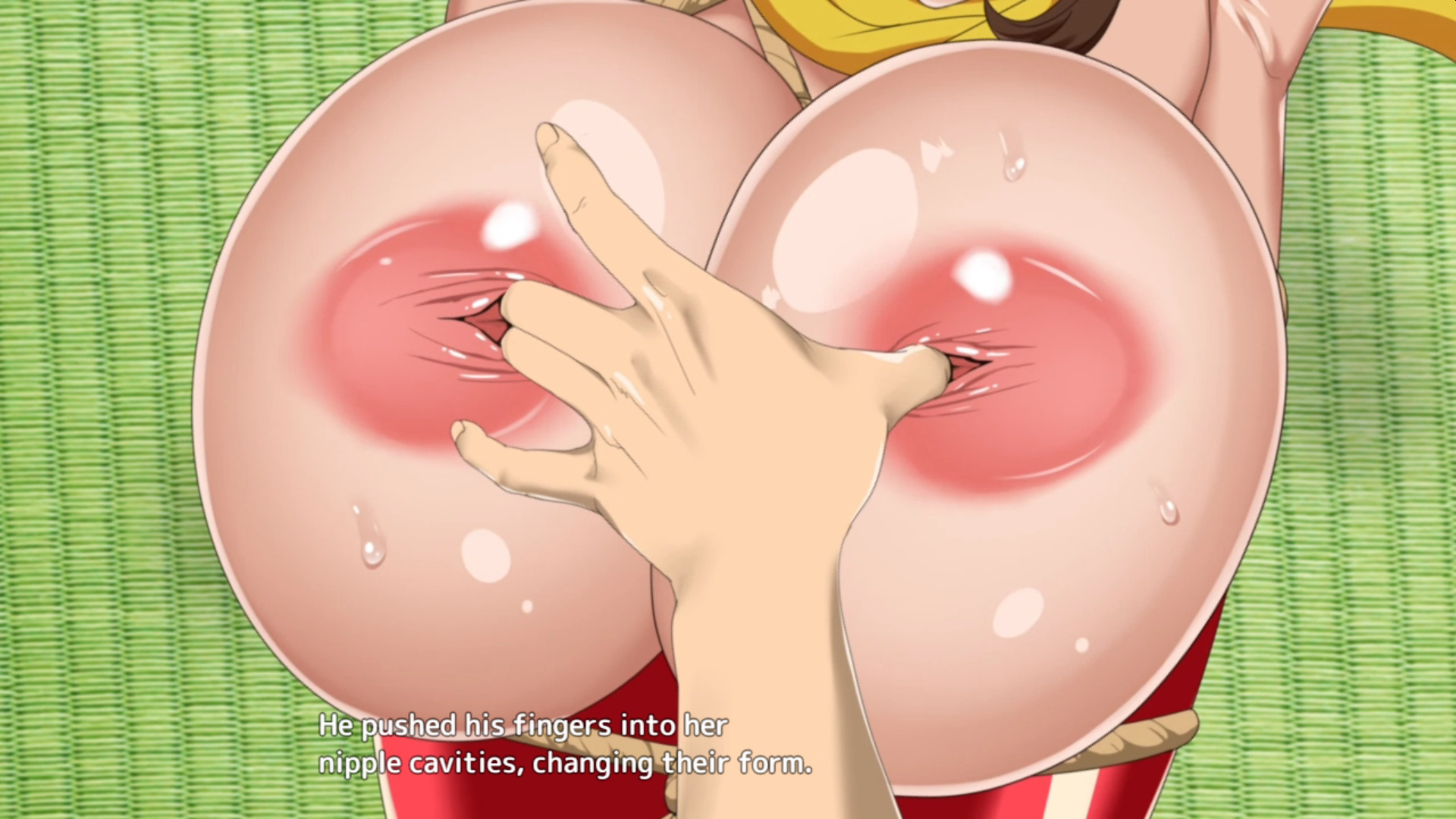
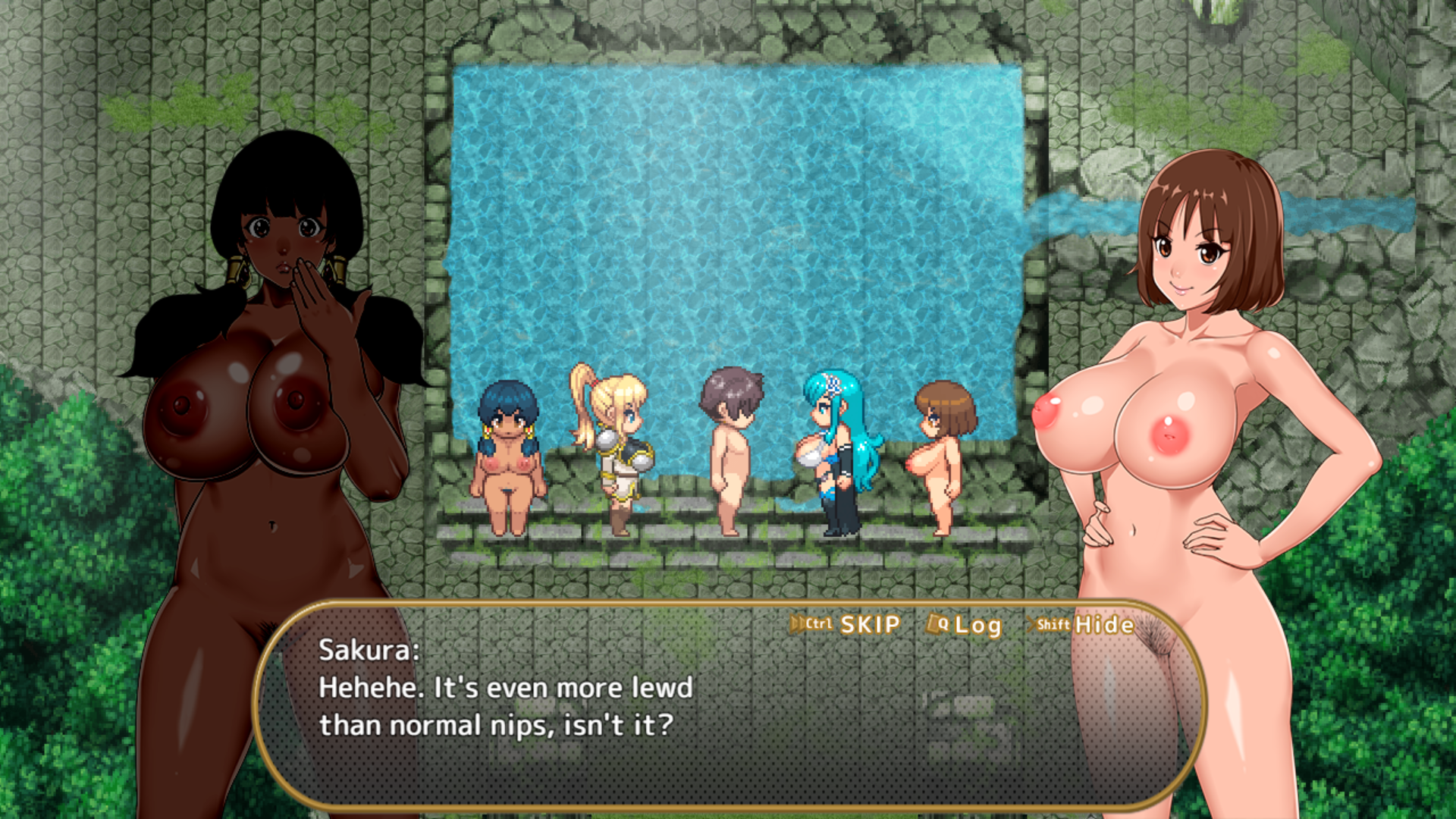
Beyond that, there is also a peeing scene, although that’s only a single monster-related sex scene for Iris.
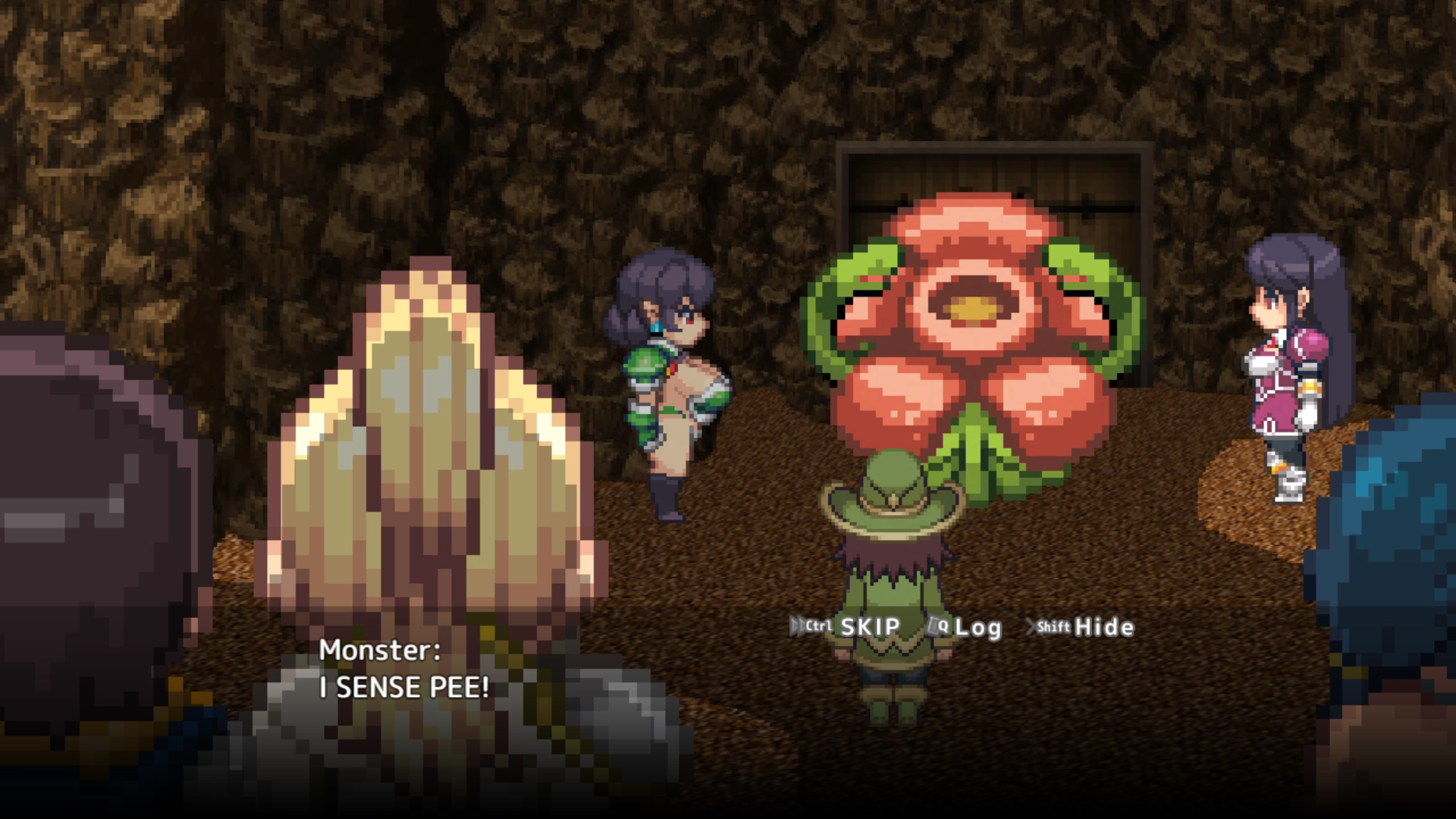
Each girl only seems to have one monster molestation scene, however. Most scenes are Protag-kun molesting the girls, instead! It’s only towards the end of a girl’s event chain that you actually get to the mythical “lovey dovey” stuff and penetrative sex occurs. The bulk of sex scenes are geared towards groping breasts or getting boob jobs, although a few involve explosive female orgasms illustrated like a water fountain with sound effects to match.
Past the fetish level, the game also features a system where you can split the party in town and invite one of the girls past your bedroom to your special apparently-sex-only second bedroom for a “free play” sex scene. You need to see different events to unlock all the options, however, this form of sex mini-game is oddly out of place in what is otherwise a story/event-driven game in that you basically just punch “rub boobs” until the pleasure meter hits 100, and you can click the button to make someone orgasm.
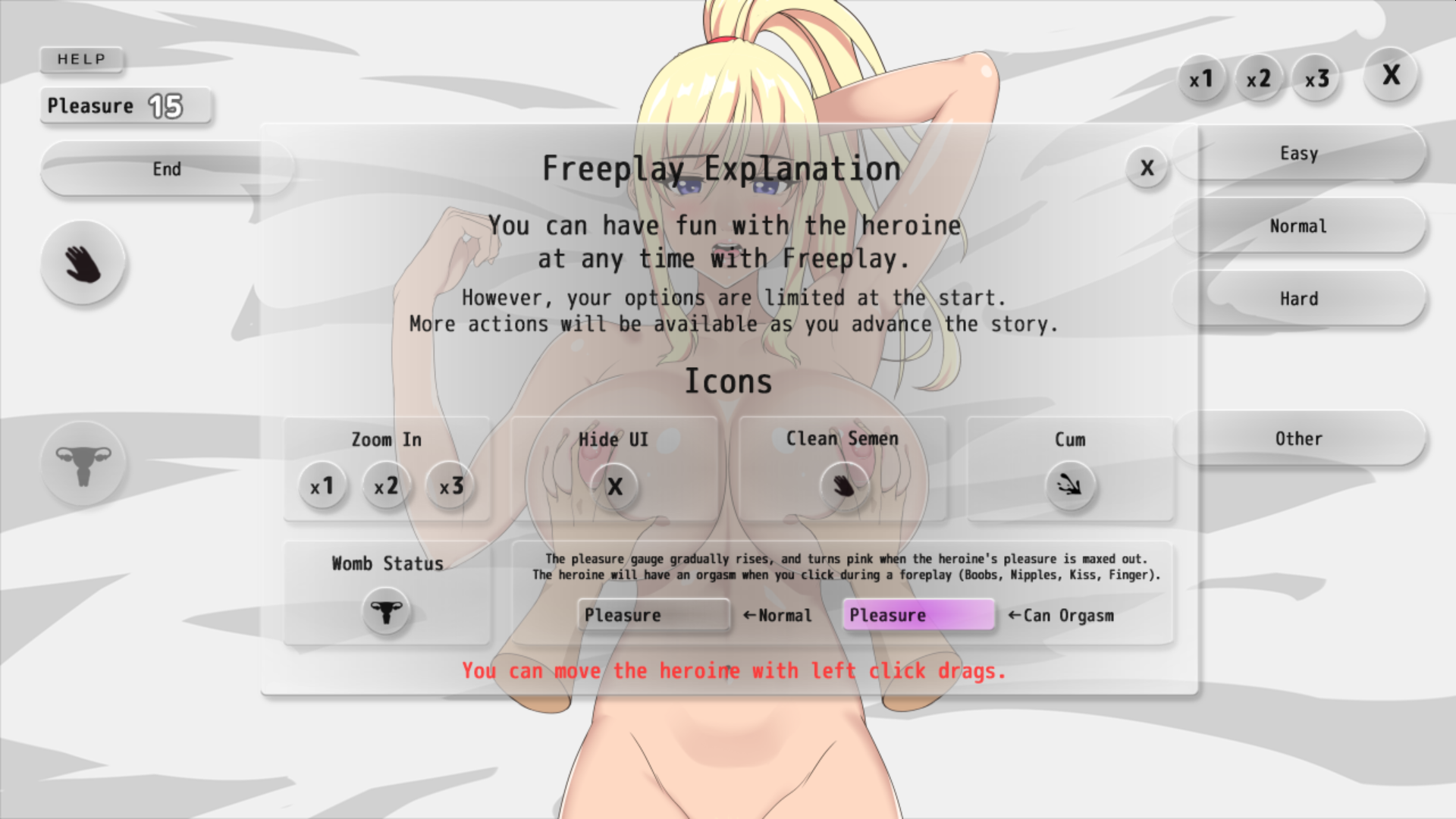
It’s interesting in that it exists, but it’s not interesting at all as a system. The girl only has a couple things to say per option, and making a meter hit 100 repeatedly loses its charm fast.
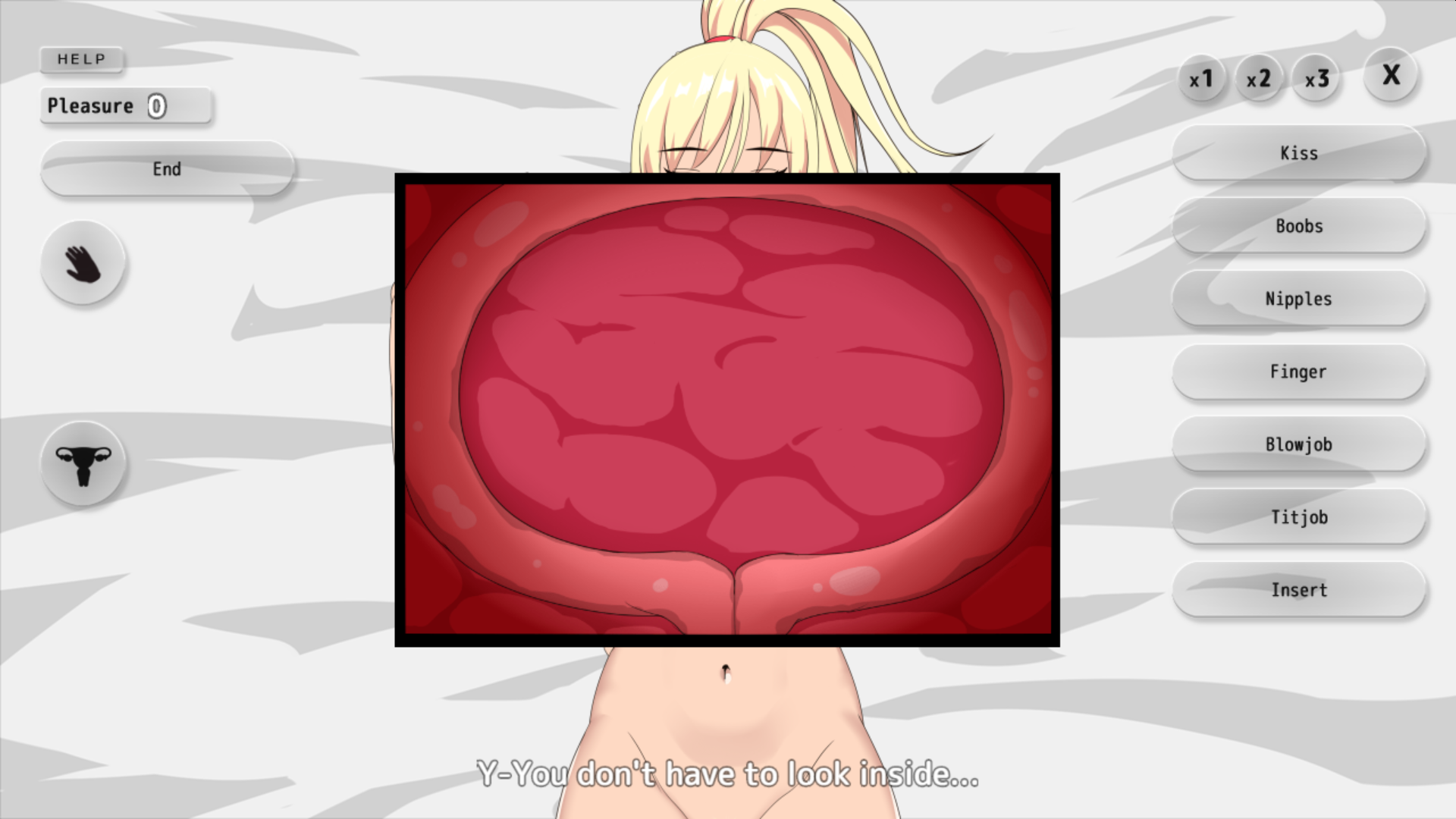
Also, while I didn’t get to it before writing this review, the game also features a harem ending if you complete all the quests. Considering how the characters are written, however, I’m more surprised there’s any ending that isn’t a harem ending.
The Characters
You can name the main character whatever you want as long as its 7 characters or less, but the default Remtairy left for the protagonist, “Protag”, is so on-the-nose that I just couldn’t bear to give him anything else. You play Prince Protag-kun, a faceless, mute character with no personality besides being horny. During dialogue, other characters simply respond to what Protag “said” in a way that hints at what he’d “said”, sort of like R2-D2.
Beyond that, you often get choices, yet only rarely do they matter. Most that matter are related to whether you take or skip a quest, but generally, you are just given a choice of how much of an asshole you want Protag to be in that given moment.
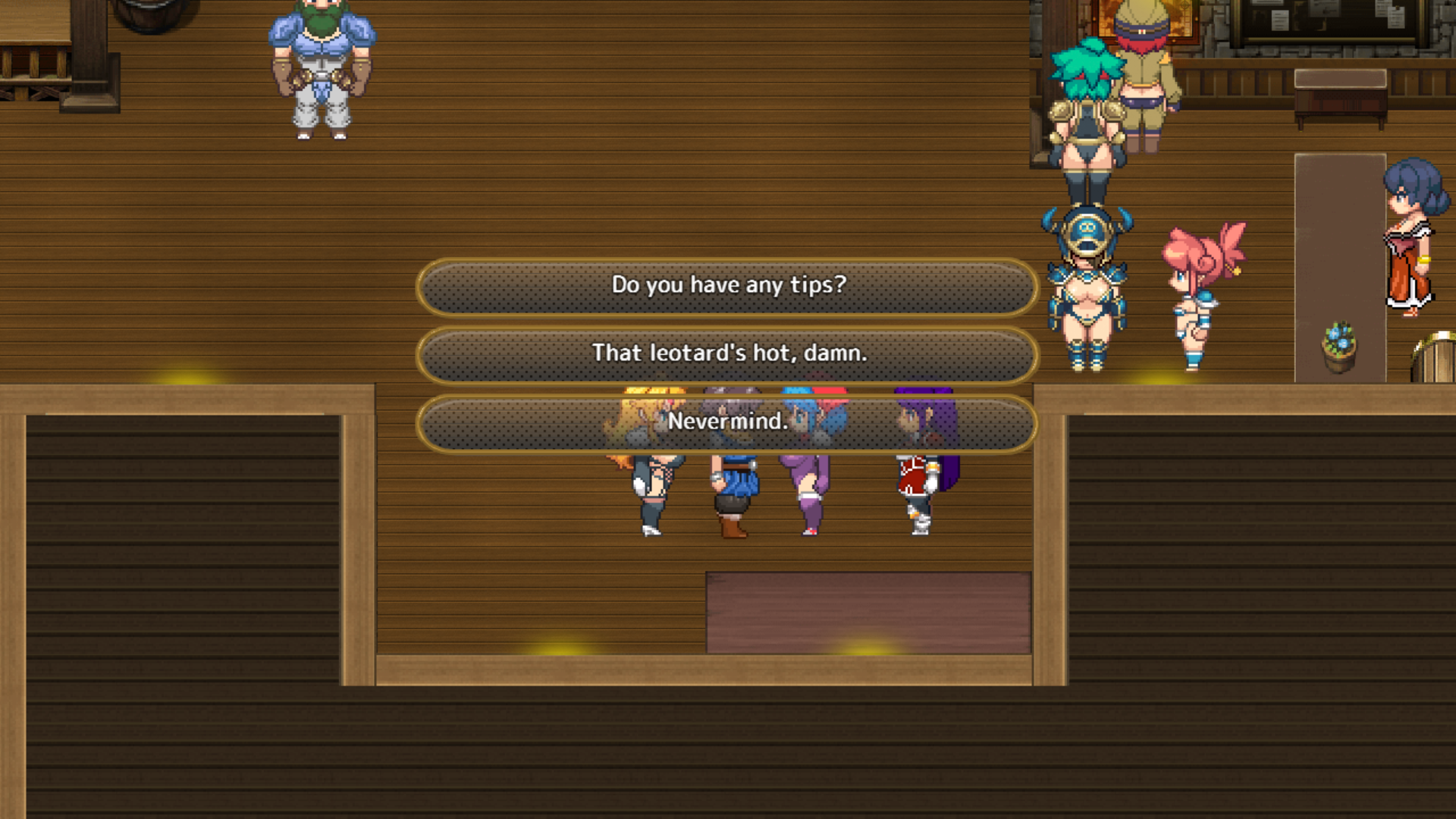
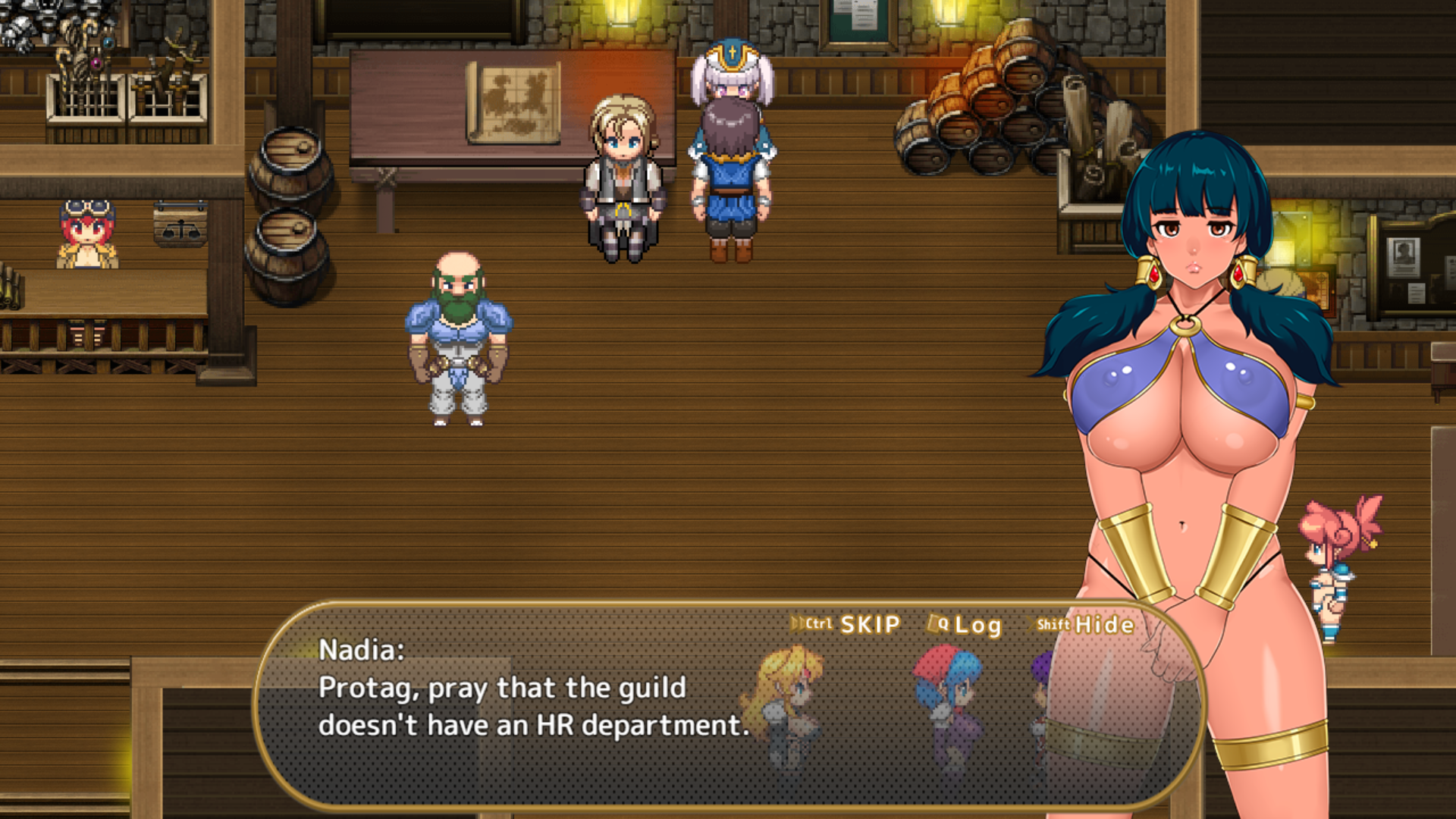
All the other main characters are four princesses of four kingdoms that want to have good relations with Prince Protag’s kingdom. But don’t worry, in spite of the entire plot basically being an excuse to send Prince Protag to an island with four potential suitors without actually telling him as such to get some politically expedient arranged marriage done, all the princesses sign up purely of their own volition even if it makes no sense why they would do so!
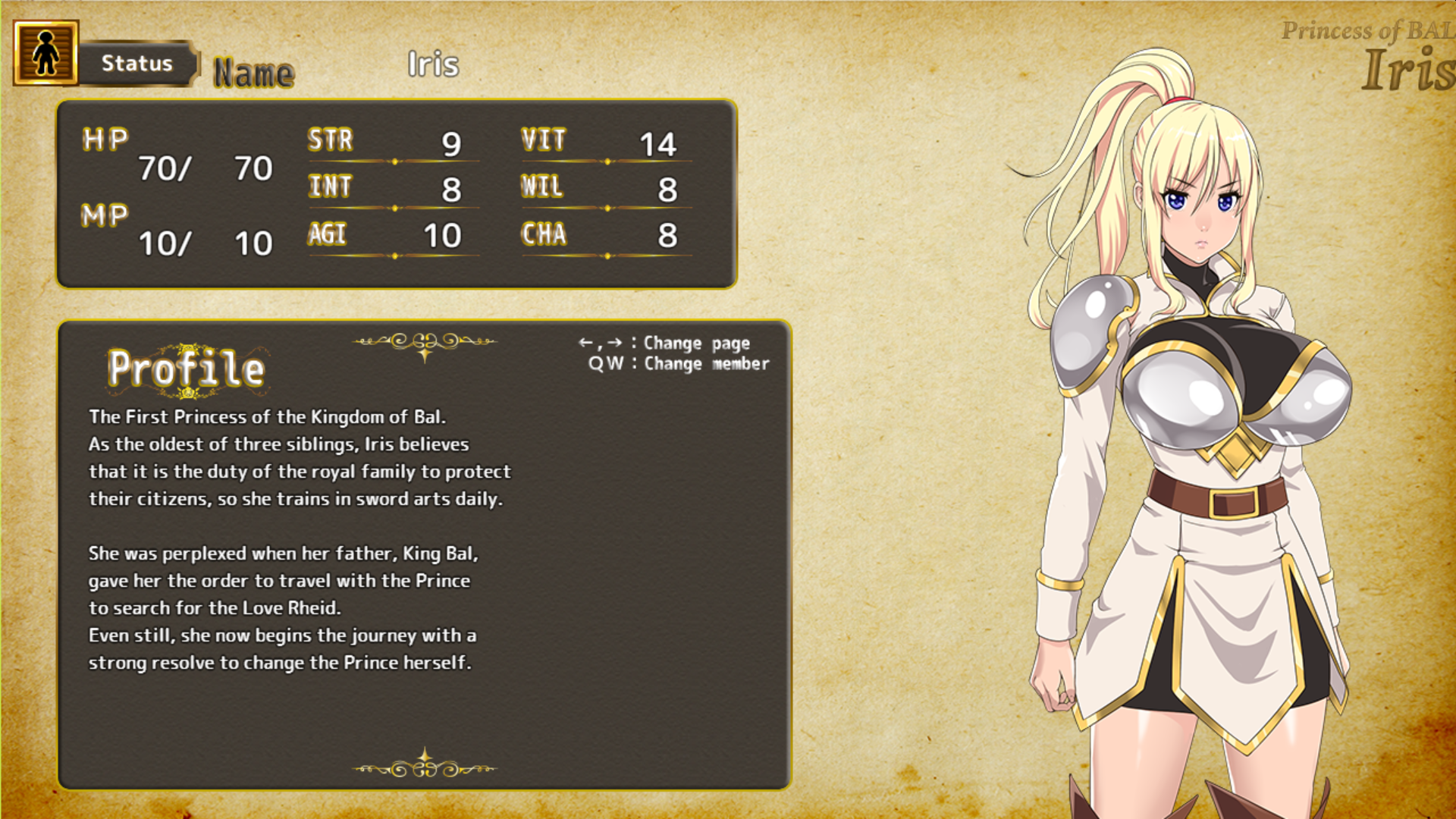
Iris is the first girl, and the only character that acts even remotely like a real human being with understandable and consistent motivations. She’s a childhood friend of Protag who fell in love with him before the game even starts. (Because of course we’re setting her up as already in love so the dev doesn’t have to write a believable sequence of events that shows a woman falling in love.) While she clearly starts off in love with Protag, she’s held back by her disliking how he’s basically a borderline rapey womanizing asshole. Since that’s basically all he ever is, it kind of begs the question what she’d ever seen in him that wasn’t those things, but hey, that’s the advantage of having a love interest in love before the start of a story – you can skip over those parts!
In any other anime-style story, she would be the proud honorable knight character, but in this game, she’s just the tsundere. That’s because she likes Protag, but isn’t willing to strip naked for him at any excuse like the other girls, b-baka! When she isn’t astutely noting that Protag is kind of a jackass and she deserves better than him, she’s constantly down on herself saying that Protag deserves better than her, such as those more (completely inexplicably) assertive girls like Nadia or Sophie. (But not Sakura, because why is she even here?)
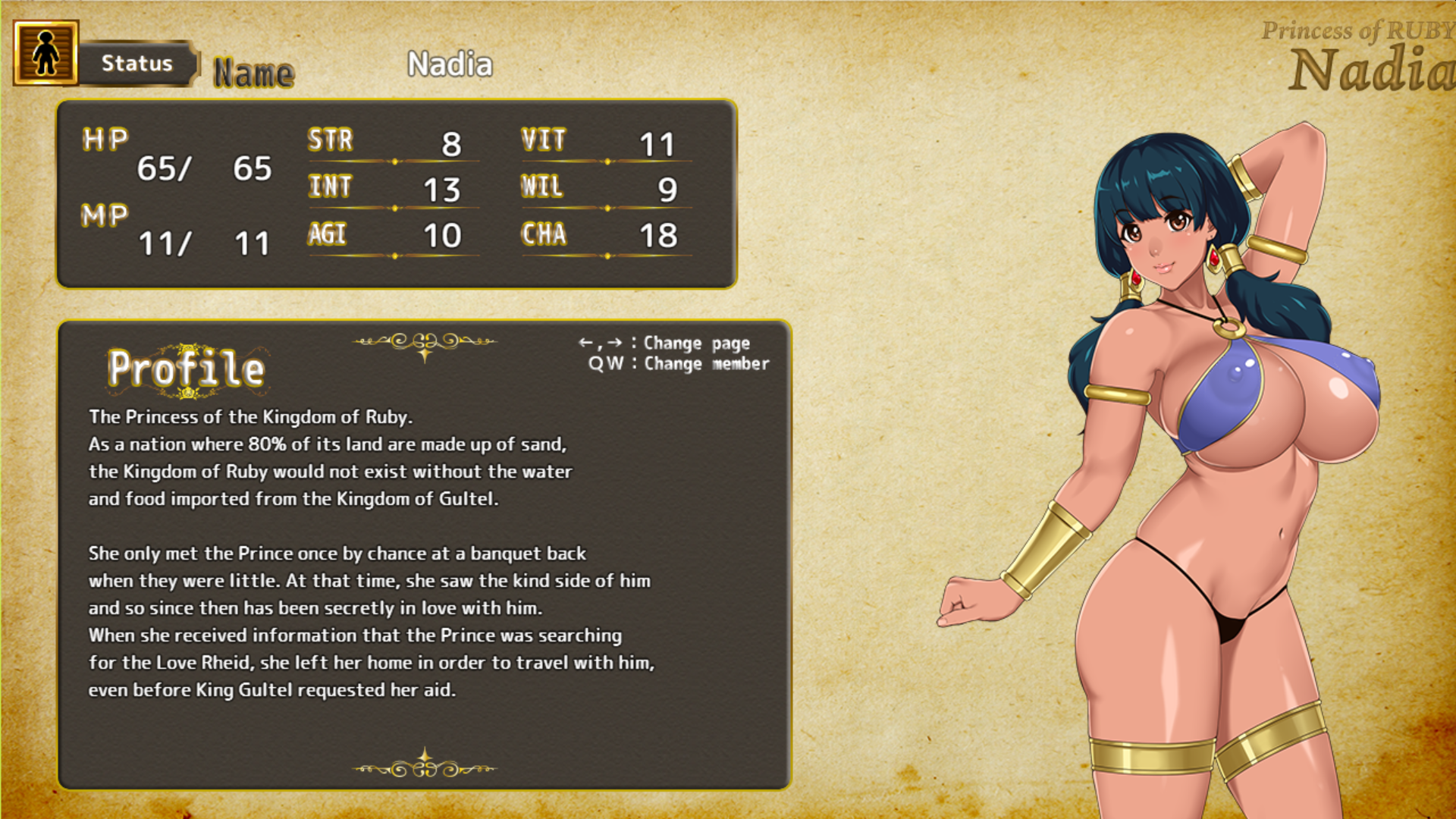
Although every character is (presumably, you never know with nobility) a princess not related to Protag, the character archetype Nadia clearly takes after is the bratty clingy little sister type. You know, the kind that goes “Onii-chan” all the time. She’s the most overtly childish in personality, which makes it rather off-putting that she’s the most mature physically. She’s kind of like your kid sister putting on your mom’s high heels and bra she stuffed with tissues to “look sexy”, but then actually trying to seduce you. It’s a confluence that is highly disturbing.
Because it’s such a great writing shortcut, Nadia is also in love with Protag before the story starts because… uh… they met for a month or so. What made her fall in love? Who knows, who cares. She’s met her first acceptable target for her affections, so she beelines for the first valid target of her desperate need for… love? Nadia’s the one to effectively set off the plot by chasing after Protag to get married and is willing to hop straight to sex to do it. In the overused vernacular, she’s both the most “T H I C C” and the most “thirsty” of the girls.
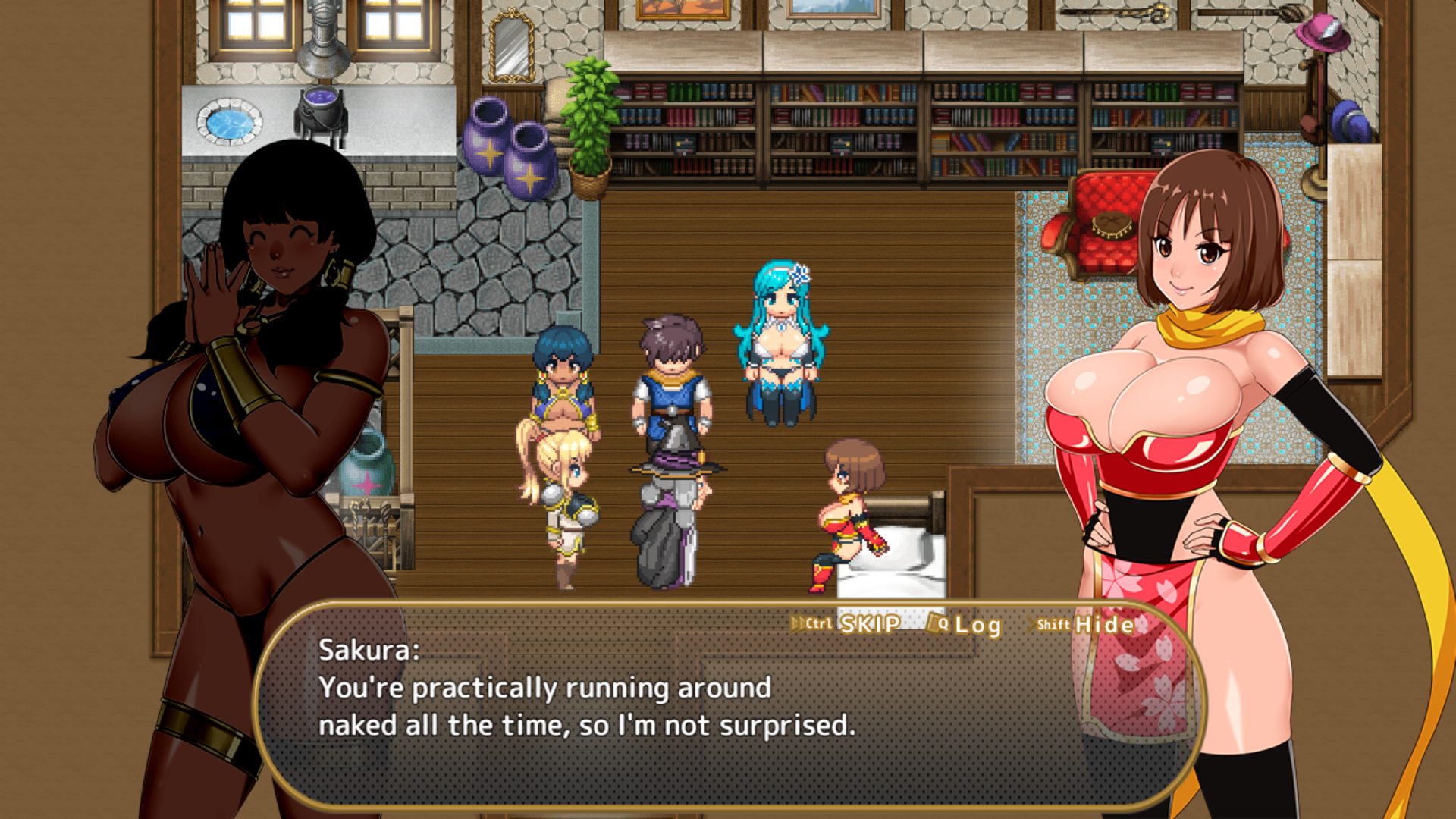
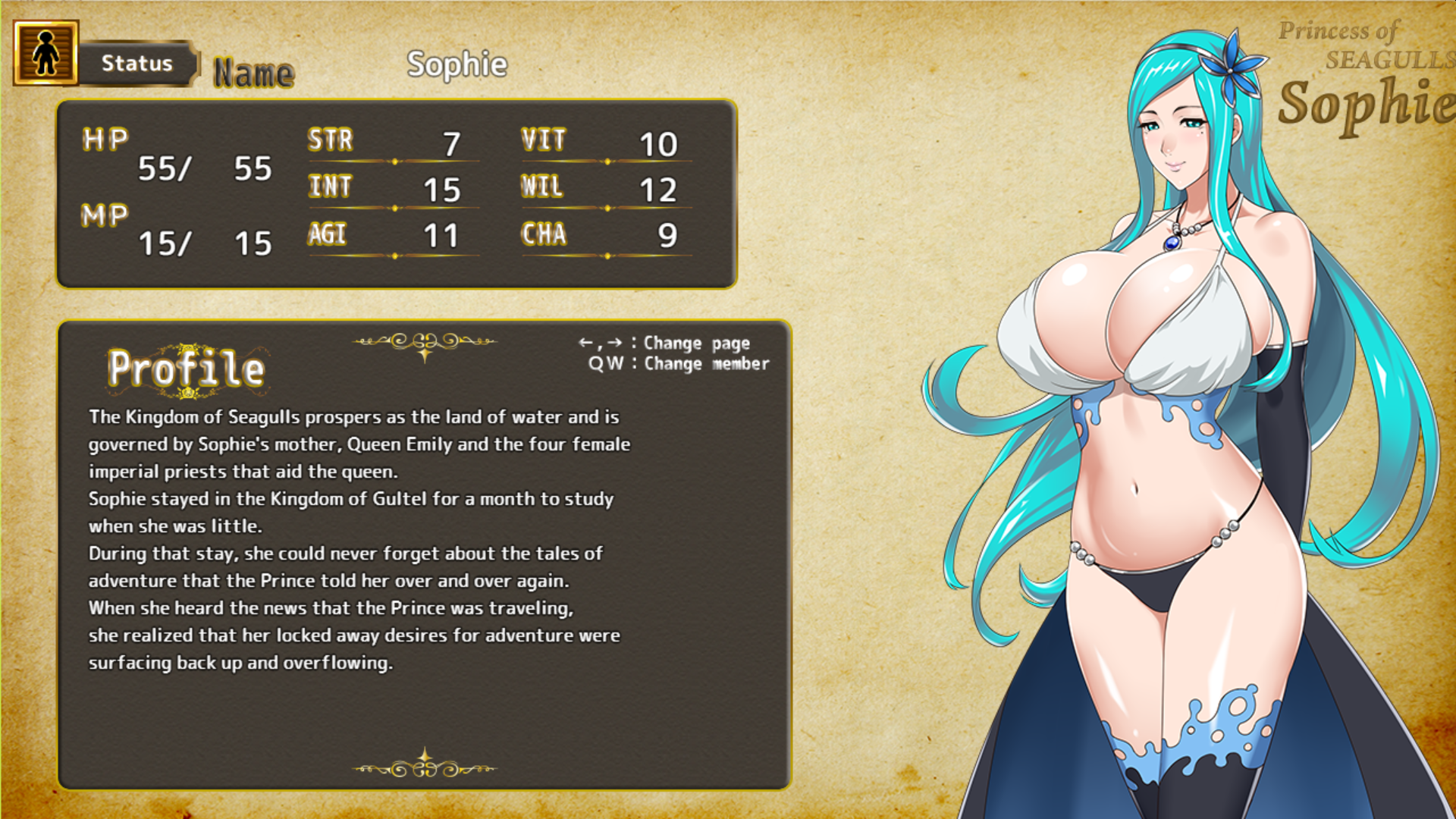
If Nadia is the little sister archetype without actually being a little sister, Sophie is the big sister, or possibly the mother, archetype. All her lines are delivered with a breathiness that make her seem half-asleep or possibly drunk. She apparently physically can’t raise her voice even when angry/being raped by monsters outside of sex moaning.
Sophie also fell in love with Protag after meeting him for about a month when they were little. Unlike Nadia, she has at least a potential reason to want to be with Protag outside just blindly being willing to spend the rest of her life with literally the first man she ever met just because he was a man. (Yes, they mention that as a reason because as a princess, she was kept away from all men.) Sophie’s nation is a theocracy, and she was raised as a water priestess first and princess second, so she’s apparently so in love with the idea of going on an adventure and getting out of her stuffy convent that she’s willing to get married to someone she barely knows. At least, that’s a plausible interpretation that could be taken from the story’s facts, but the game still wants to insist it’s mostly just because she’s literally just willing to sleep with the first man she ever saw because that’s how TWUE WUB works, right?
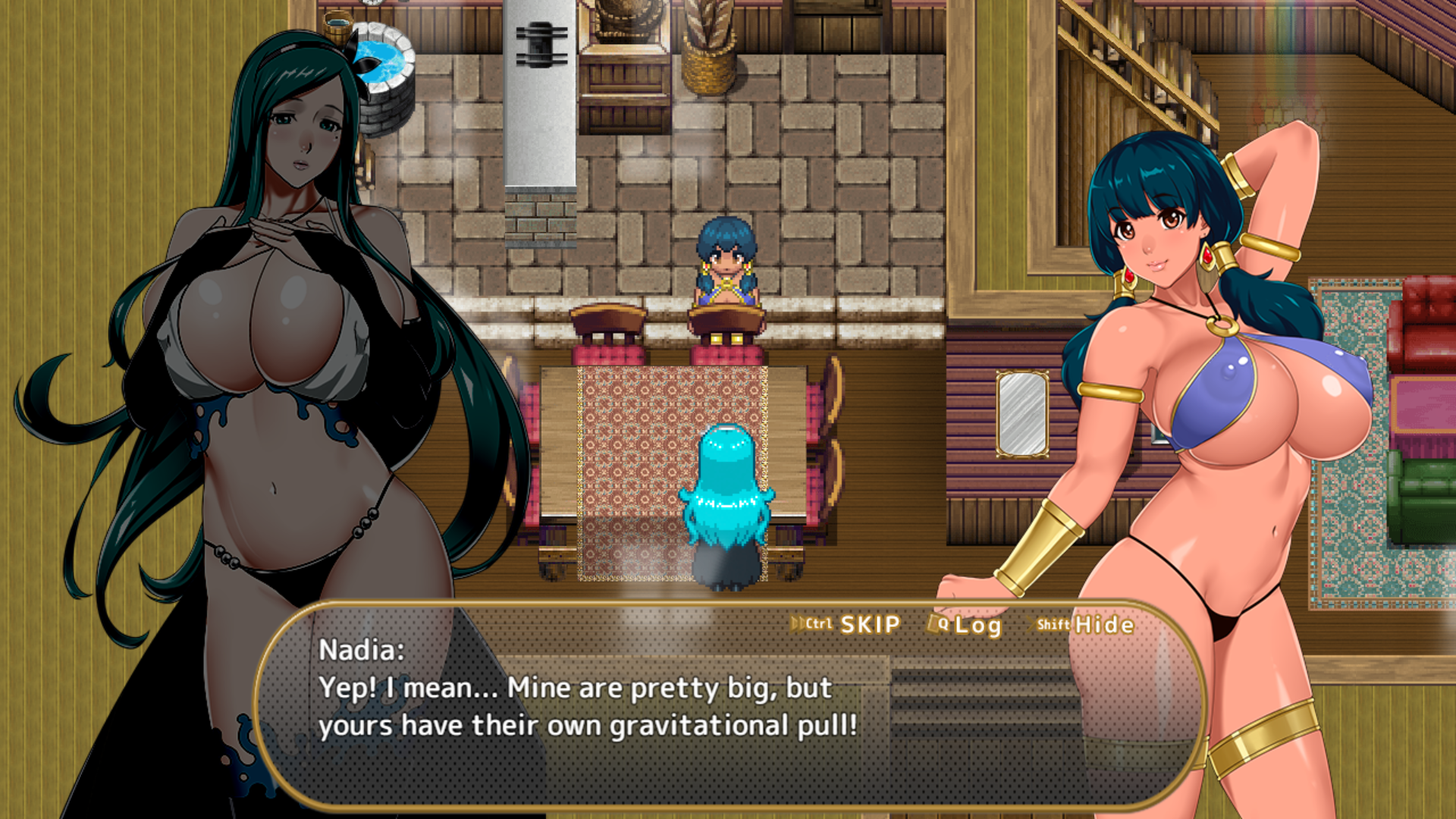
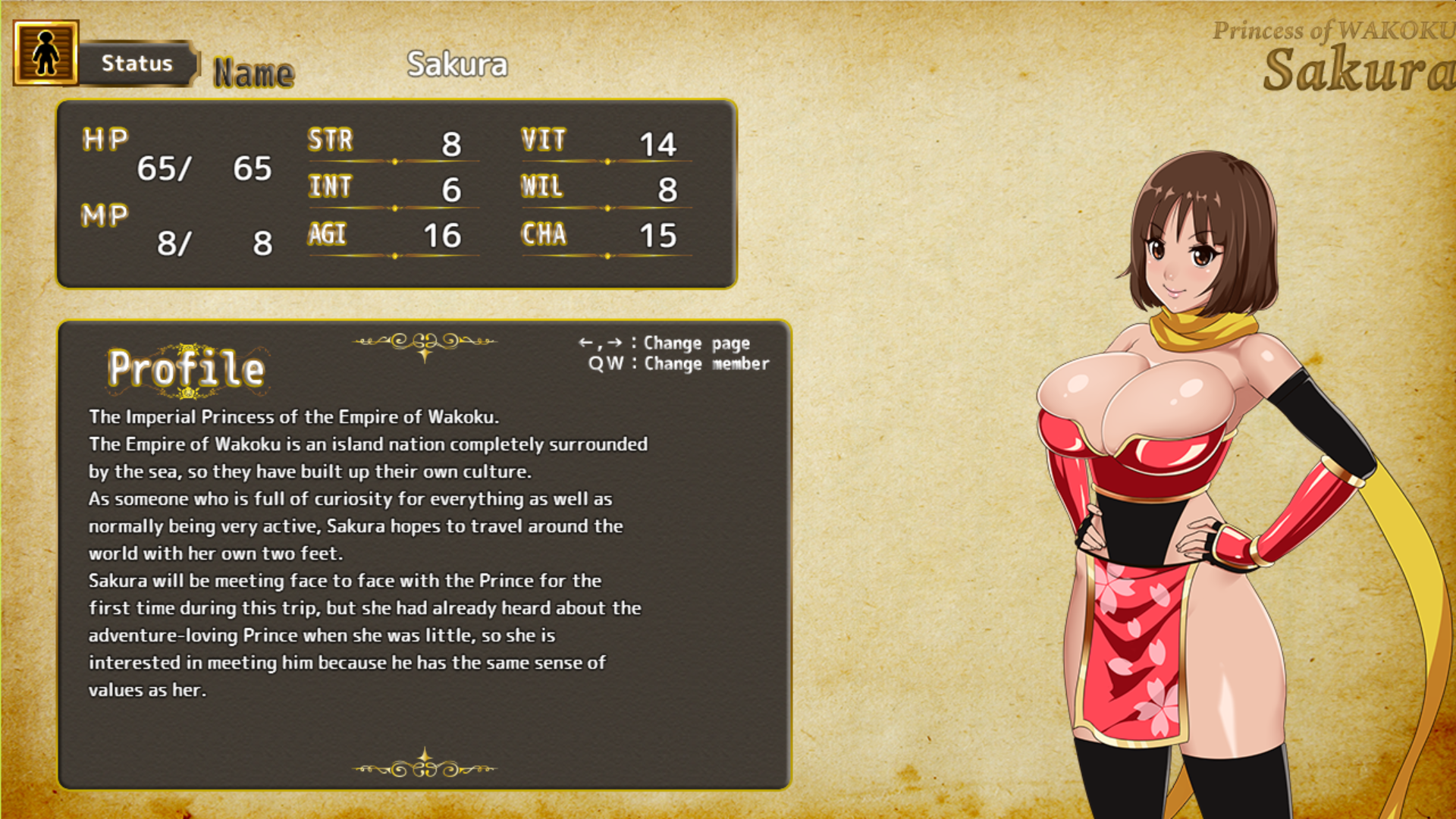
By contrast, Sakura is a real “free spirit”, in that she signs herself up to get married to someone she’s literally never met before at all! Her archetype is that of the “genki girl”, and she additionally has a Kansai accent. Due to how Kansai accents have historically been translated, this means that the character who’s clearly the stereotypical ninja girl from the Japan analogue speaks with a Southern (American) accent.
I really can’t stress enough that she has basically no reason to be there, no reason for her to agree to an ultimatum that going on this trip means potentially being raped by Protag whom she does not know, and there is no reason given for why she winds up “falling in love” after being molested by him repeatedly. She doesn’t act like she cares about him one way or the other until it’s love confession o’clock, and it’s time for the mandated deflowering sex scene where she declares her love for faceless generic Protag guy.
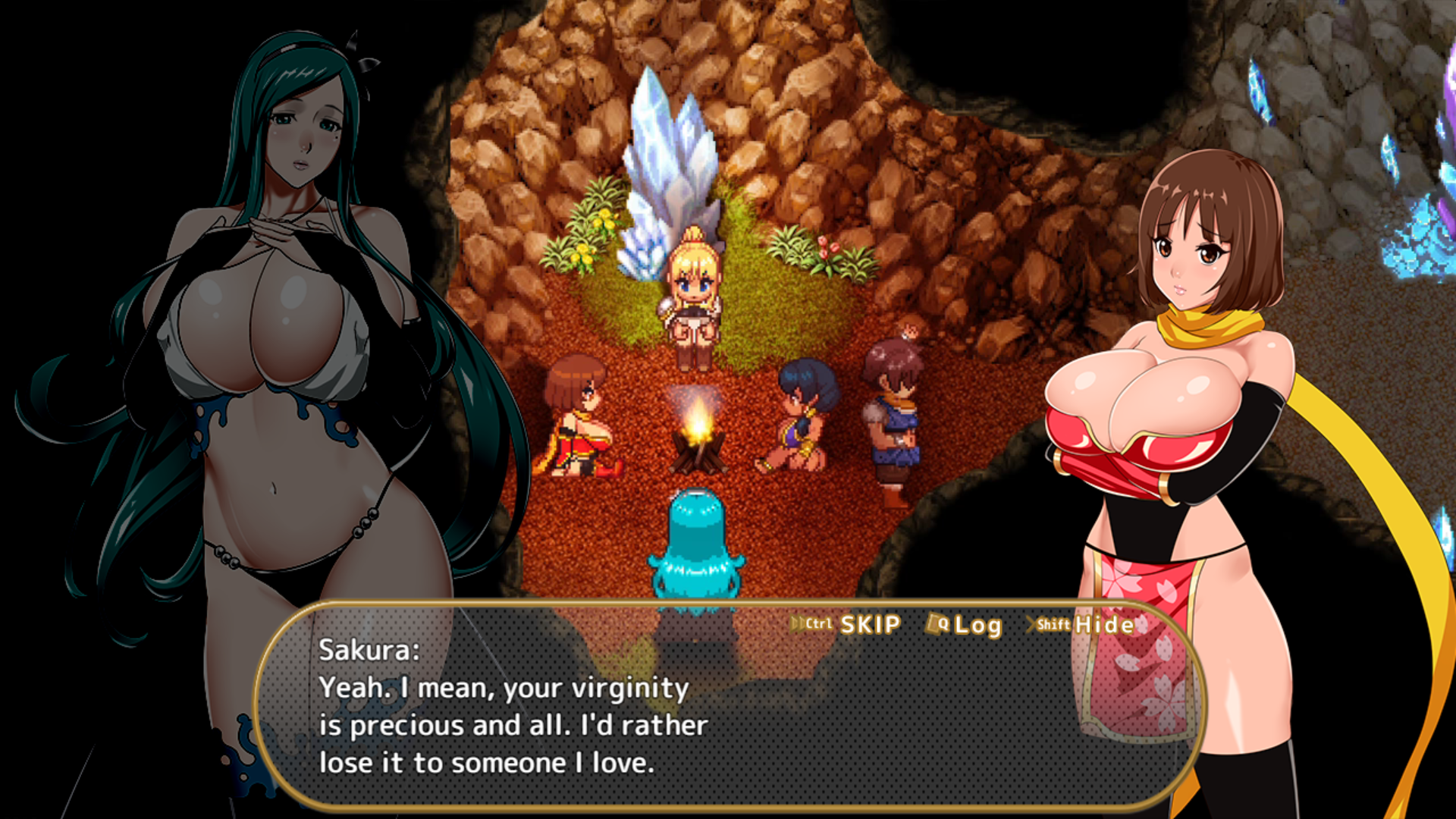
Of the main characters, Sakura is by far the least comprehensible as a character. Every time she tries to state something that should be a motivation for her actions, she immediately does something directly contrary to her stated goals.
In a totally-not-unrelated matter, she’s also the character, besides Sophie, who most embodies all the Developer’s Fetish stuff, so her character warps to be whatever it needs to be in any given scene to let the Dev play out whatever absurdly contrived sex scene is in store for the characters today.
The Philosophy of the Porn
It’s a bizarre trend, but it seems like the more a Japanese game is focused upon being a porn game, the more sex-negative it tends to become.
A game like Real Life Plus will have sex (if you put in the patch, and you can enjoy the game without it) at the end of a romantic comedy that exists as a climax (no pun intended) to a relationship that has been building since the start of the game, and it’s purely celebratory.
A nukige like this, however, is entirely concerned with whose fault everything is.
Sex can’t be the mutual decision of both participants, oh no, because you’re showing a main character having sex with multiple women without consequences to his relationships with the other women. You can’t have women that just accept open relationships, however, because My Girl Is Not A Slut. So therefore, you have to force the women to have sex against their will. Oh, but we (usually) don’t want to outright make the protagonist a rapist, so let’s just have him… uhhh… trip! Yeah, he just happens to trip and accidentally land dick-first into the girl’s vagina and… gets stuck for… some reason, and can only get out by ejaculating, YEAH!
In the first sex scene in the game, Protag follows Nadia through a narrow gap. You get a choice where you can choose not to look or just stare at her thong-clad ass, but either way, Protag conveniently doesn’t hear when she loudly exclaims she’s stuck and rams into her ass. From there, he’s apparently “overwhelmed” by the scent, and “cannot help” starting to lick her to climax whereupon she gets unstuck because the sex scene is over. When asked about how she told him to stop, his response was that he didn’t hear her the first three times.
Saying that it’s not Protag’s fault, he just can’t help molesting girls who are in a position where they can’t fight him off, so it’s all their fault for being molestable is a running theme.
In another scene, Sakura tries to show off a rope trick, but naturally ties herself up, instead. Protag takes this as an excuse to pull off her top and grope her breasts.
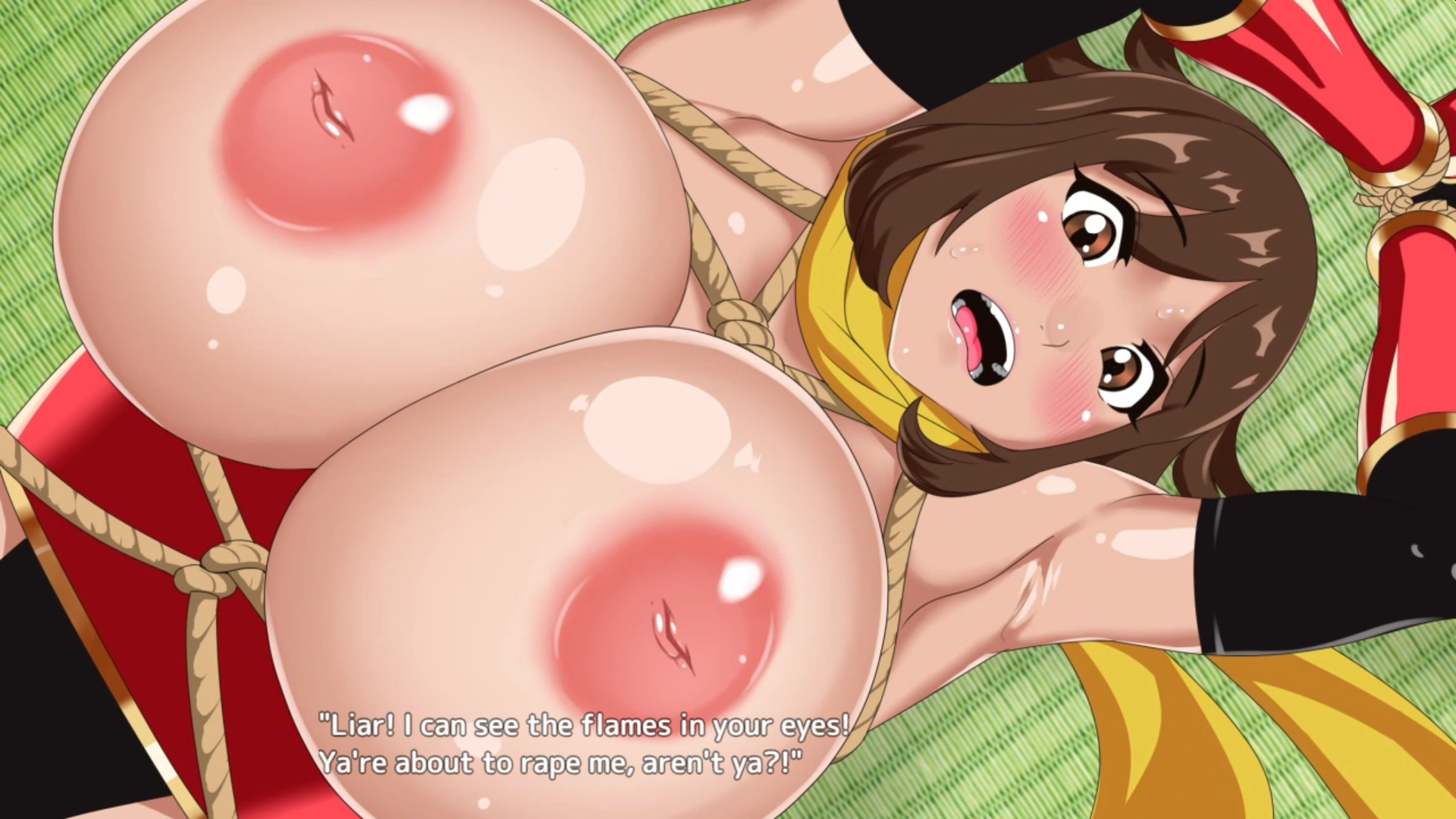
He then uses her bound body to give himself a boob job, but since this is porn, she gets off on it, as well. He then manages to convince her that it’s all her fault for getting tied up, not his fault for molesting her the instant she dropped her guard.
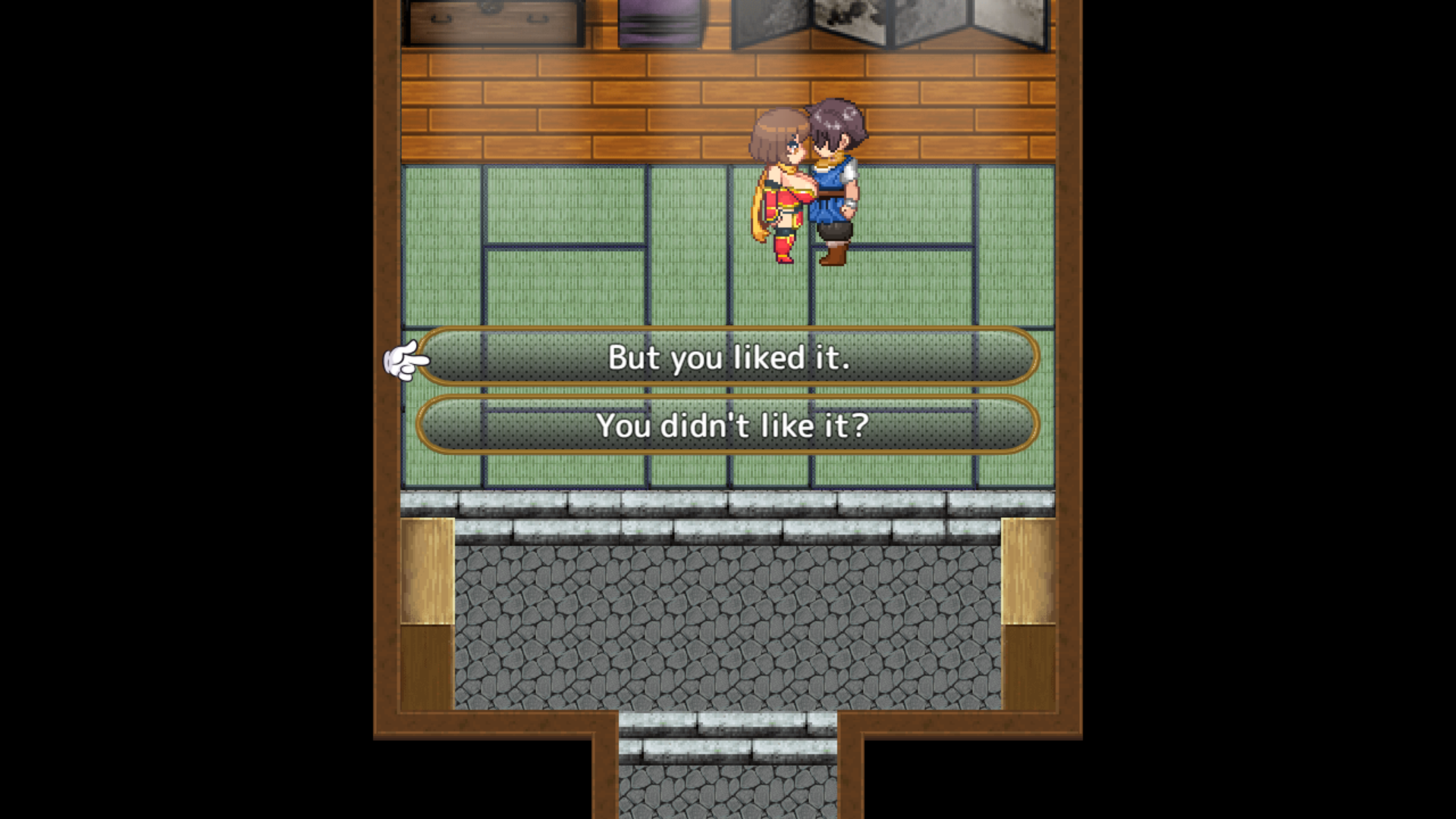
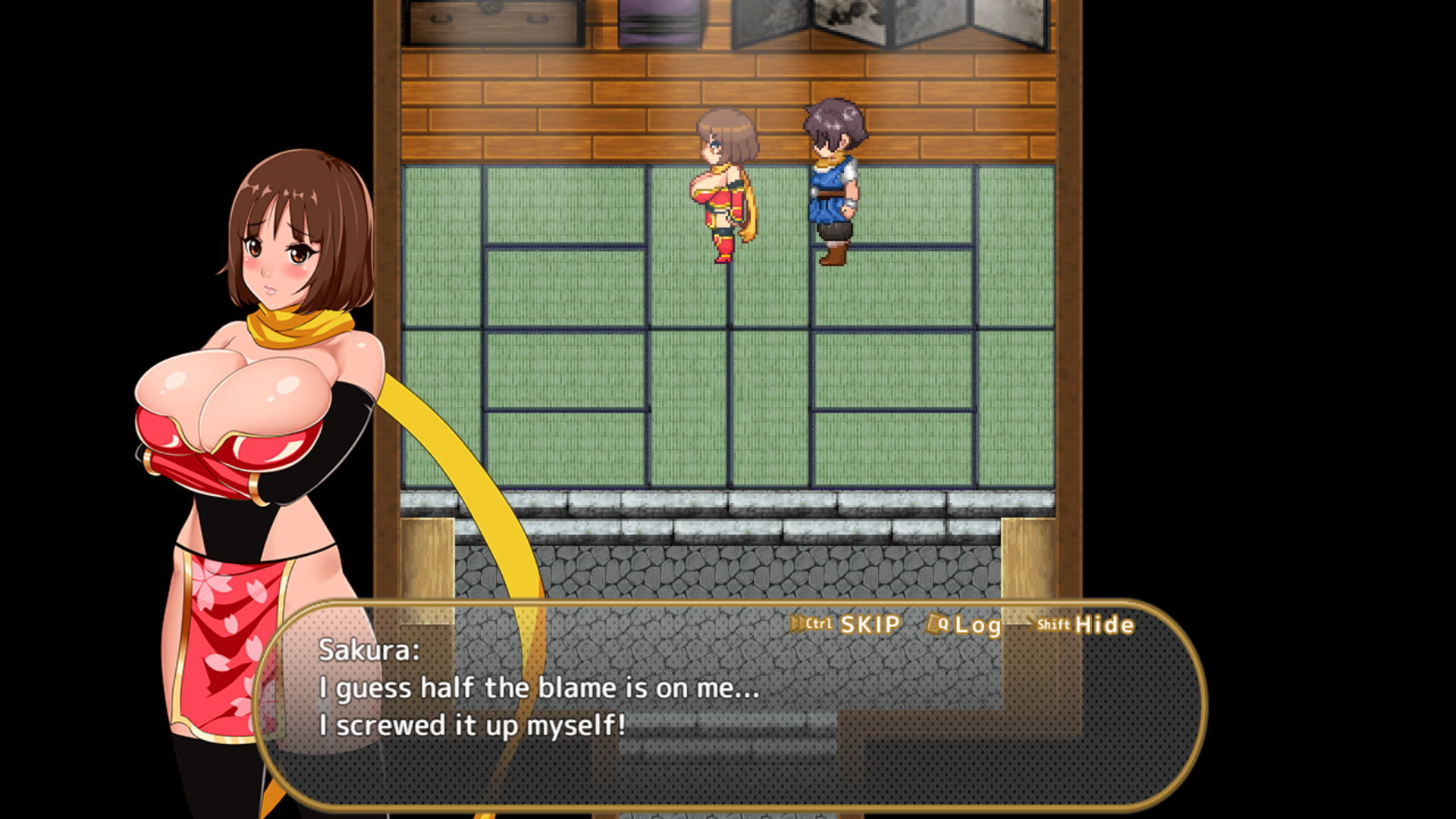
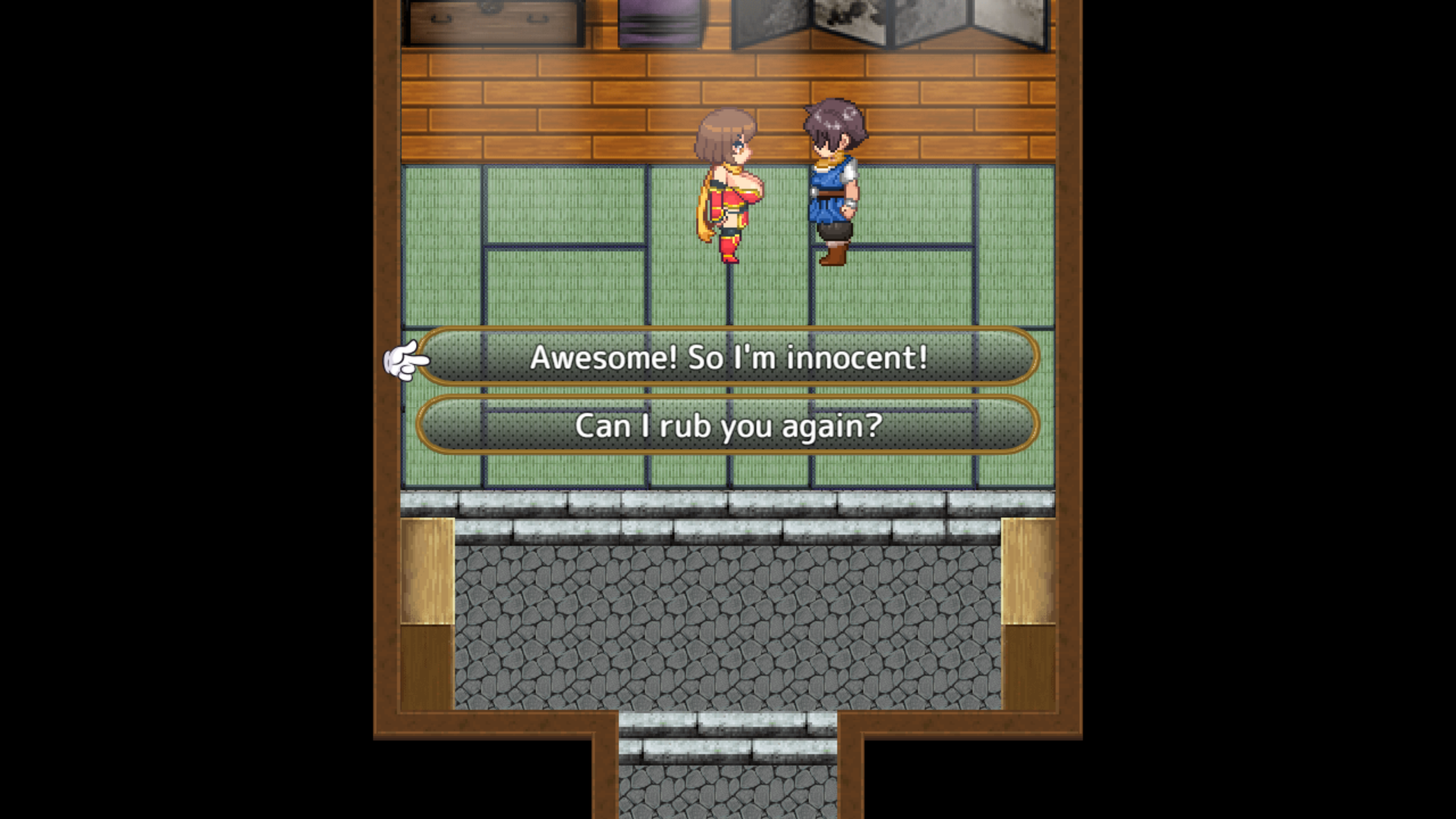
Time and time again, reality contorts to try to say that nobody is responsible for any of their actions, all in the name of making characters (morally) “good” and “relatable” by stripping them of their agency. The end result is a character with no character being shoved through arbitrary events for no reason other than that it is sex scene o’clock. Uh-oh, tripped and fell down a hole with Protag’s hand somehow finding its way into your panties during the fall?
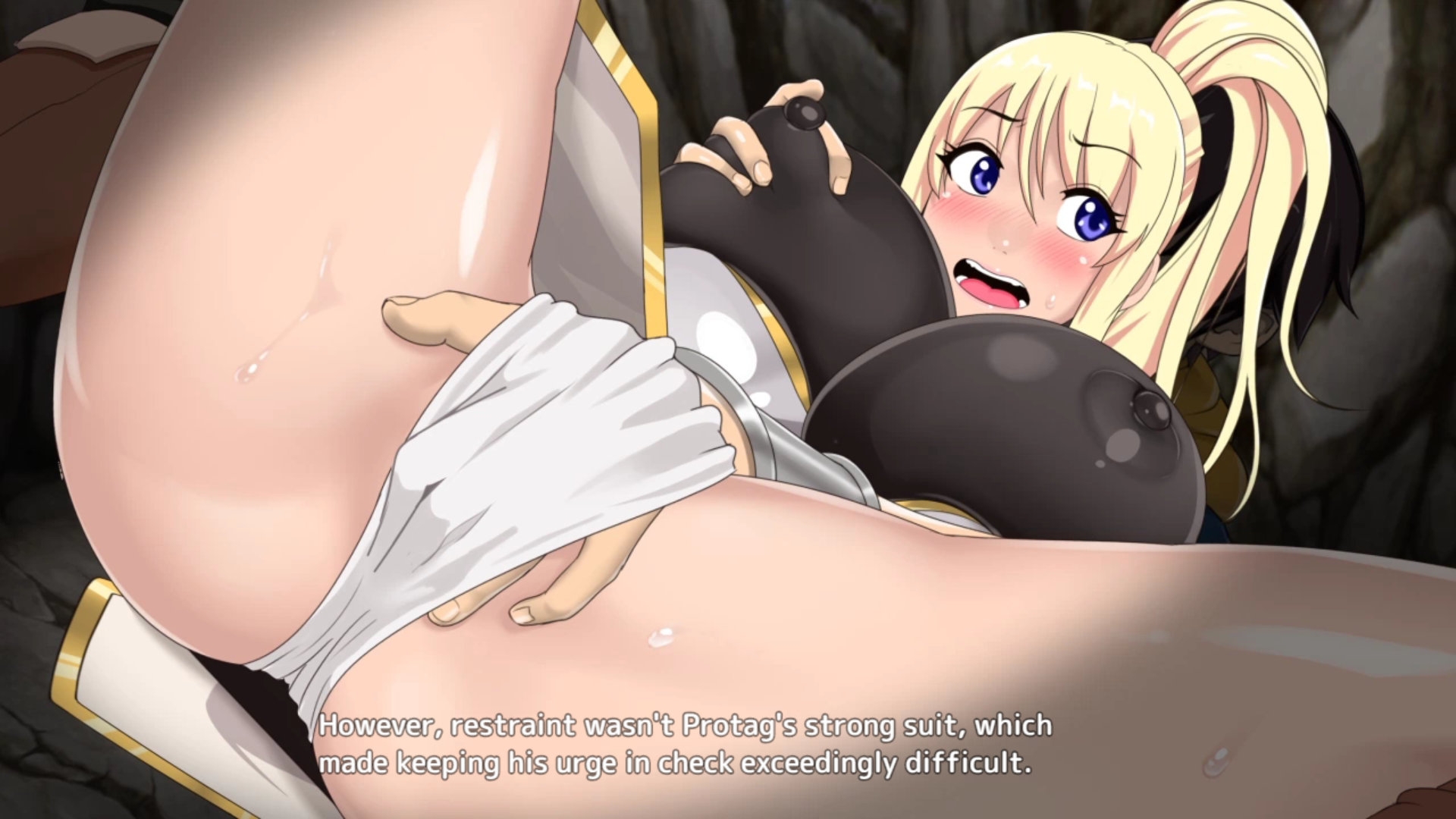
The most extreme example of this abnegation of responsibility comes from one of the earliest quests, where the characters camp in a cave and the princesses that were invited converse with the two princesses that went with Protag in the first place, dropping the basic outline of the competition for who would marry Protag.
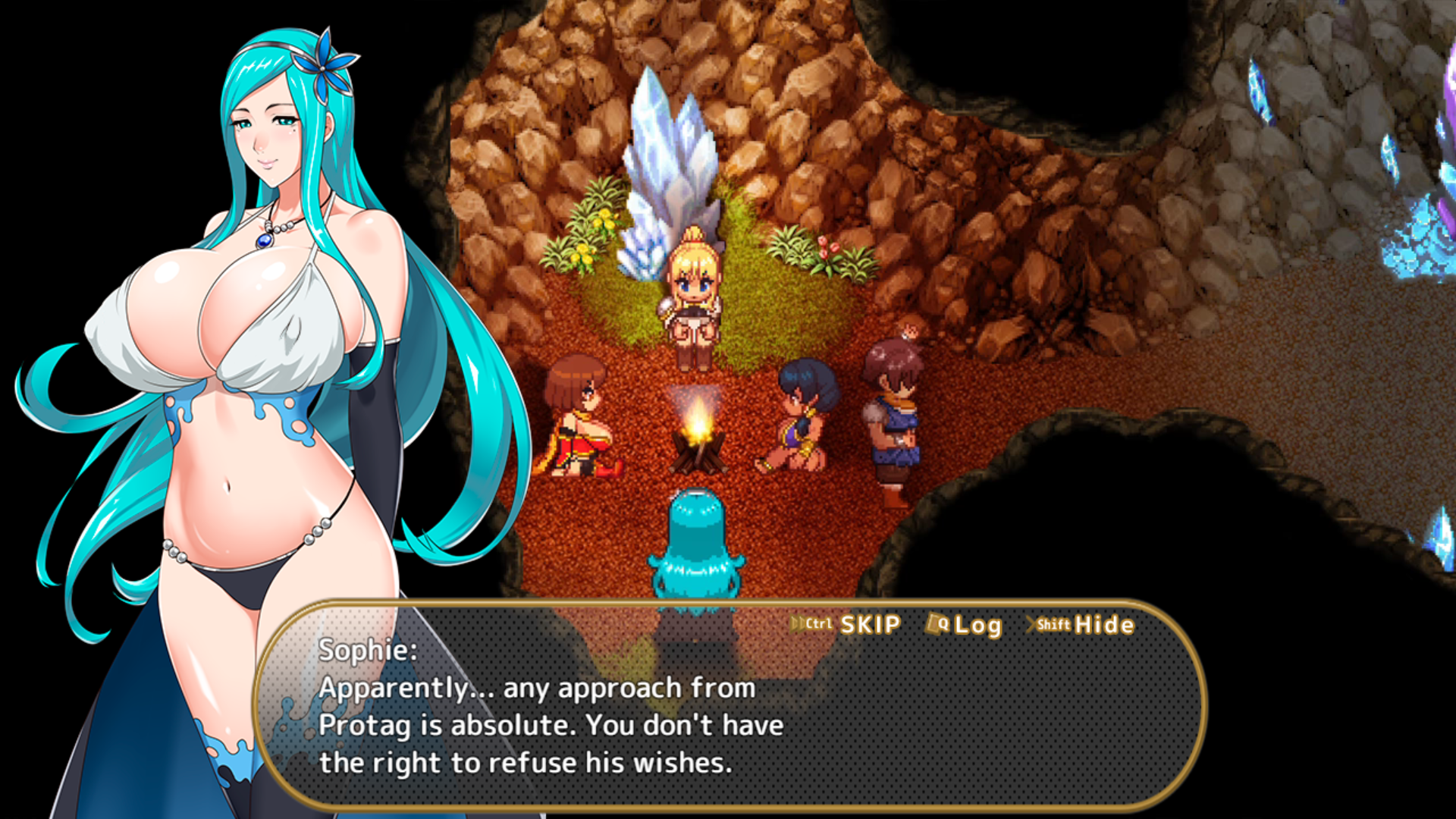
The most bizarre part about this agreement that Protag can have sex with the girls whenever he wants is that this kind of arbitrary Deus Sex Machina fiat is completely unnecessary as a plot point. They (wisely) never tell Protag he has a license to rape them at will, so he can never invoke that condition. The girls are always either forced by arbitrary circumstance into being molested or are consenting to the sex past the halfway point, so there’s no reason to argue they couldn’t resist because of this rule since they were physically prevented from resisting in the first place or didn’t want to resist. Why does this exist?! It only serves to make the king look like a tyrant and the girls who agreed to these terms (especially Sakura, who immediately after says that she wants to give her virginity to someone she loves just after saying she agreed to give a stranger free reign to fuck her against her will) look like gibbering idiots for agreeing to something so blatantly out of their favor and against their only stated motivations.
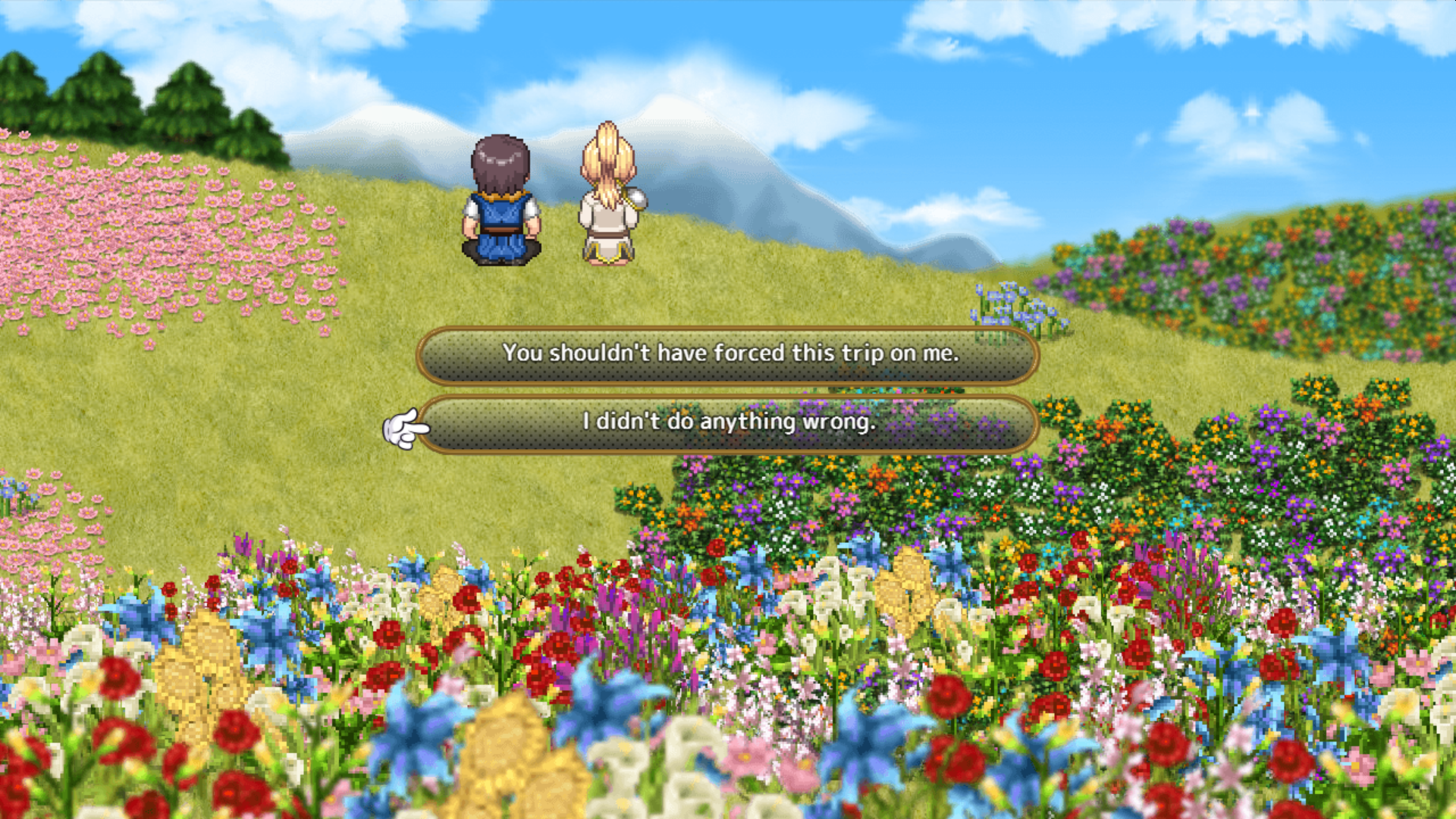
This mentality isn’t isolated to Island SAGA, however, it’s an epidemic in ecchi animes. To give an example, in Negima!, there is a point where mercenaries are hunting down the main characters, and one mercenary is a hulking, ominous robed figure that is obsessed with breasts and only talks when talking about wanting to rub breasts. After the fight with the mercenaries, however, it’s revealed that character was a girl all along, so they let her into the bath with the other girls she then promptly gropes until physically restrained. When it’s a hulking robed figure, that’s presumed to be a man who wants to evilly sexually molest the girls, but oh, as soon as it’s a girl doing those things, it’s suddenly comedy, and it’s totally fine! It’s just like how we guys are totally fine with someone else rubbing our junk if they say it’s OK because they’re a gay man!
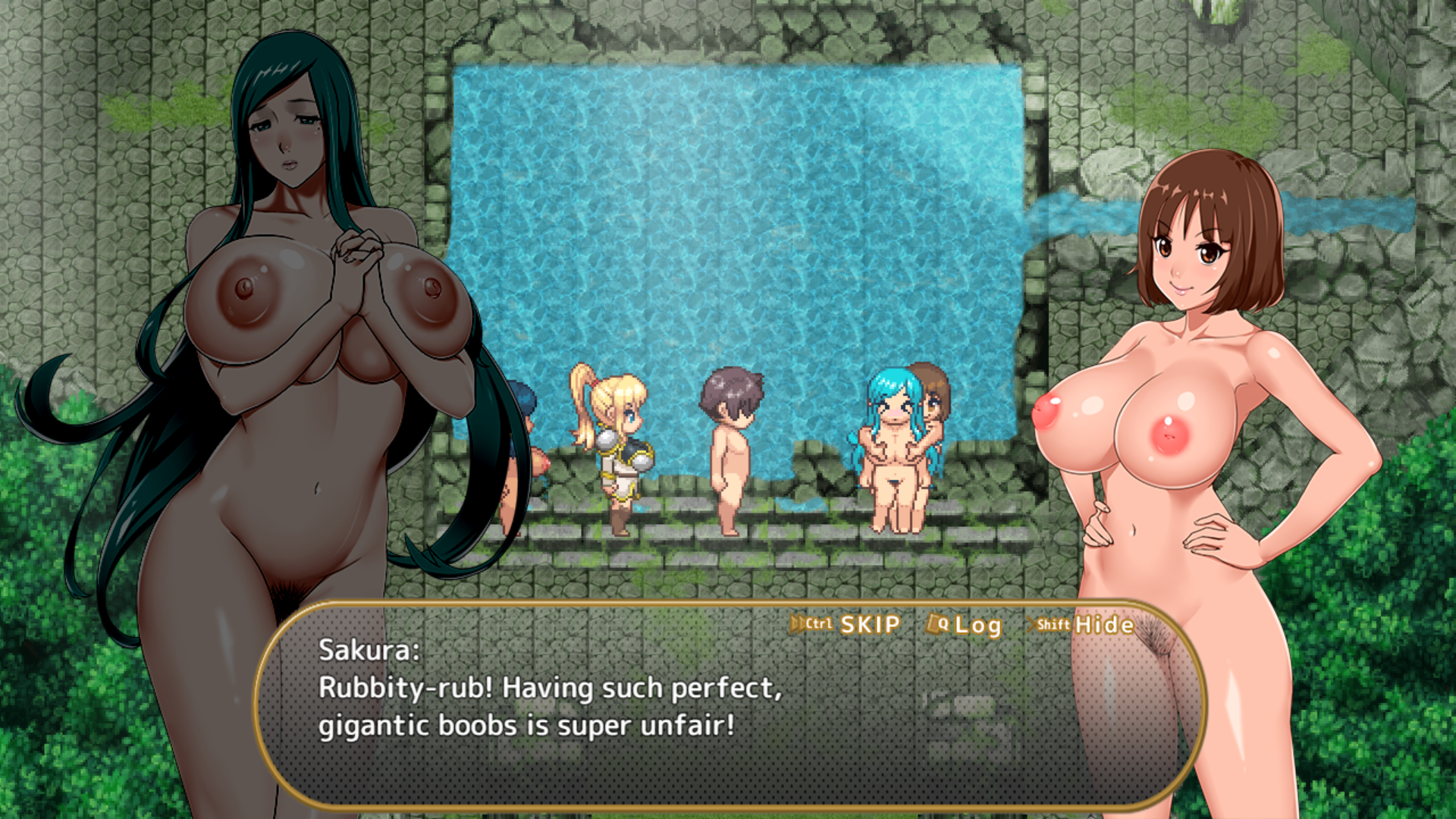
Also, much like how the boob-grabbing is “funny” when it’s done by a girl, we have another tired staple of anime “character development”. Iris has a scene where she feels inferior to the other girls because she feels her breasts are too small, and therefore goes for the most obvious, most stupid solution – hearing the same meme rumor and asking Protag to massage them, which leads to yet another boob job scene. I suppose I shouldn’t be so negative. I should congratulate Kamichichi on being so rigidly adherent to formula he adds all the cliches in even when they’re so flagrantly against common sense they hurt.
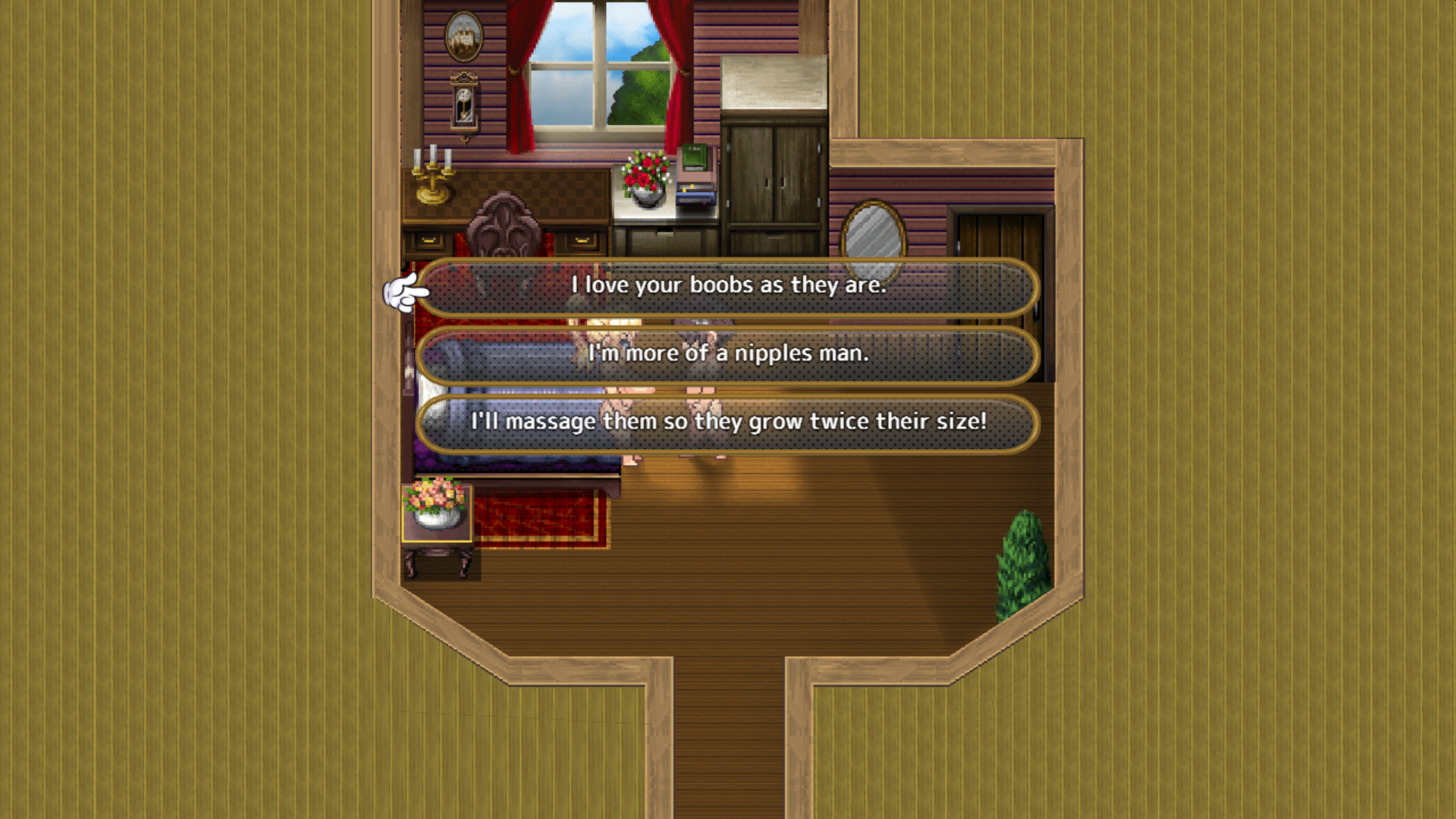
I mentioned at the start that the main reason I decided to review this game was to use it to contrast against Bifrost, and it winds up coming down entirely in Bifrost’s favor in this regard. Bifrost had a rapist protagonist, but it at the very least allows for the point of view of the victim and gives you space to determine for yourself the guilt of the protagonist. Even if people ignore the signs and take the wrong impression away, I can at least respect creating a villain protagonist or even just a morally grey one. Island SAGA doesn’t want to let players make up their own minds. The philosophy of Prince Protag essentially amounts to, “I’m going to have sex with you anyway, so you might as well consent,” and then says that Protag was entirely justified and blameless for doing it because… uh… aliens made him do it! Yeah! Going so far out of the way to triple-excuse the Protagonist’s every choice (including saying it wasn’t his choice to start with) destroys any sense of agency or relatability even as they’re trying to make the character “relatable” by not overtly allowing any “willful” controversial behaviors.
All of this, however, gets flipped right around as soon as you’ve taken the girl through four events and you have the love confession. Then having sex is TWUE WUB, and suddenly all the rapist plants and “accidentally” falling dick-first into girls’ breasts stops happening because the contrivance is no longer necessary, the girl can be “pure” when she says she wants sex with Protag and vice versa, even if they were already saying they were fine with sex from the very beginning. What’s important is that we have a scene where we show the girl heavily bleeds because she’s definitely a virgin when Protag gets the deflowering scene. (Note: most girls don’t bleed when their hymen breaks, and if they bleed anywhere near this much, call a doctor, it’s a serious condition, not some fetish bait!)
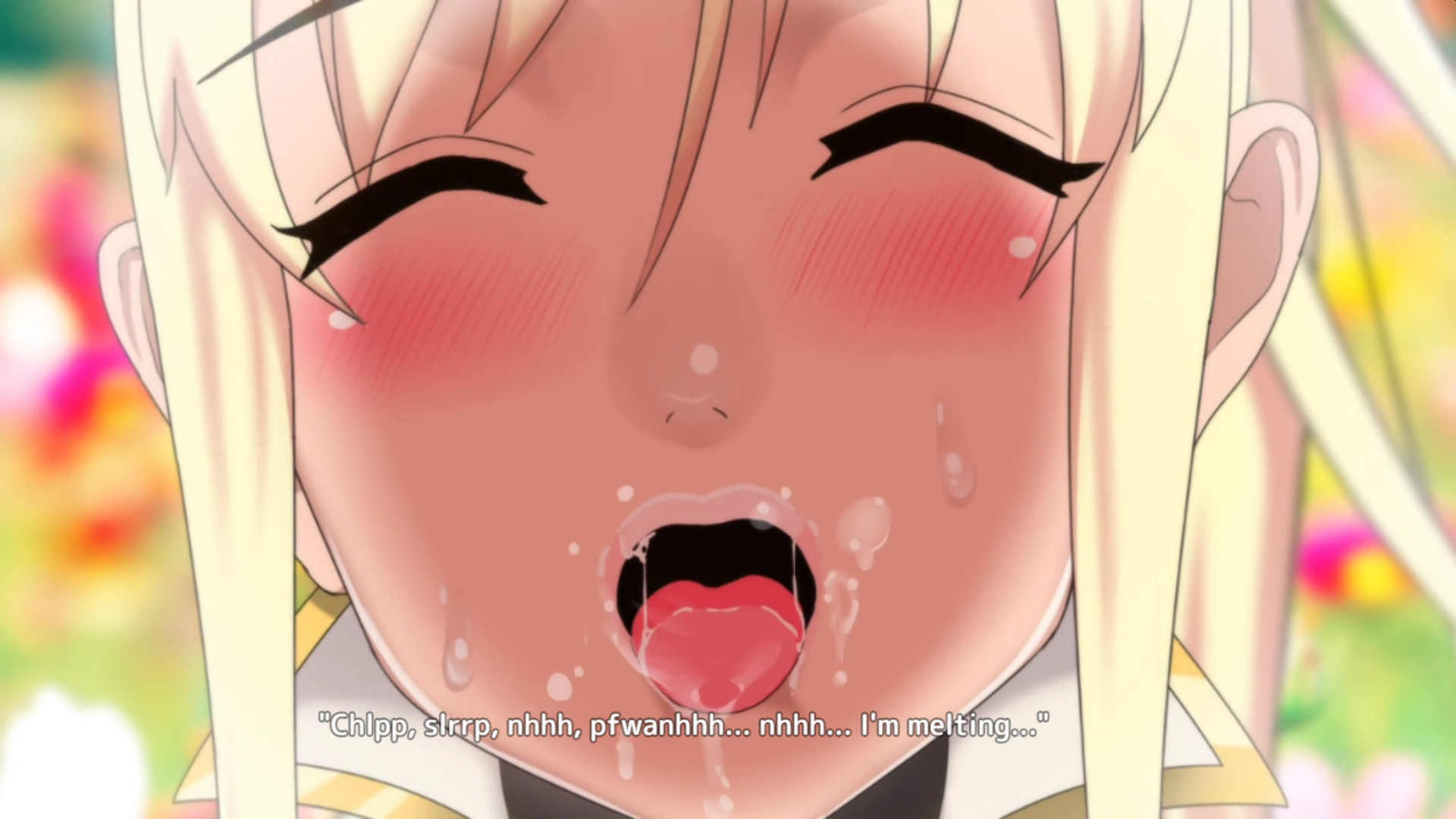
This leads to the final part, where they’re heading towards the inevitable harem ending. Pretty much the only interesting thing you can do with a harem ending (at least, one with a faceless, personality-less Protag-kun) is explore the relationships between the women and why they’d ever agree to that. Naturally, however, Island SAGA goes more for the cliche “love is a battlefield” and they’re all just trying to get him for themselves and jealous of the others (when they can notice the others through the porn cloaking fields).
And on that note there are…
The Glaring Plot Holes of the Porn
Let’s take another sex scene blow-by-blow…
You’re on a quest to kill a manticore. (It’s a beast that’s like a lion with a scorpion’s tail, but in this game looks like a monkey with skeleton arms for no reason.) Your party spots the manticore on top of a cliff where it’s looking the other way, so Sophie (unusually) steps forward and declares they should climb up the vines to get behind the manticore. The vines then suddenly unravel and bind only Protag and Sophie, leaving the other three girls standing there perfectly capable of doing something like chopping the vines attacking their friends down. They apparently cease existing until after the sex scene is over so that the sex scene can focus entirely on how Sophie gets raped while Protag gets impotently angry at how he’s getting cucked by a houseplant.
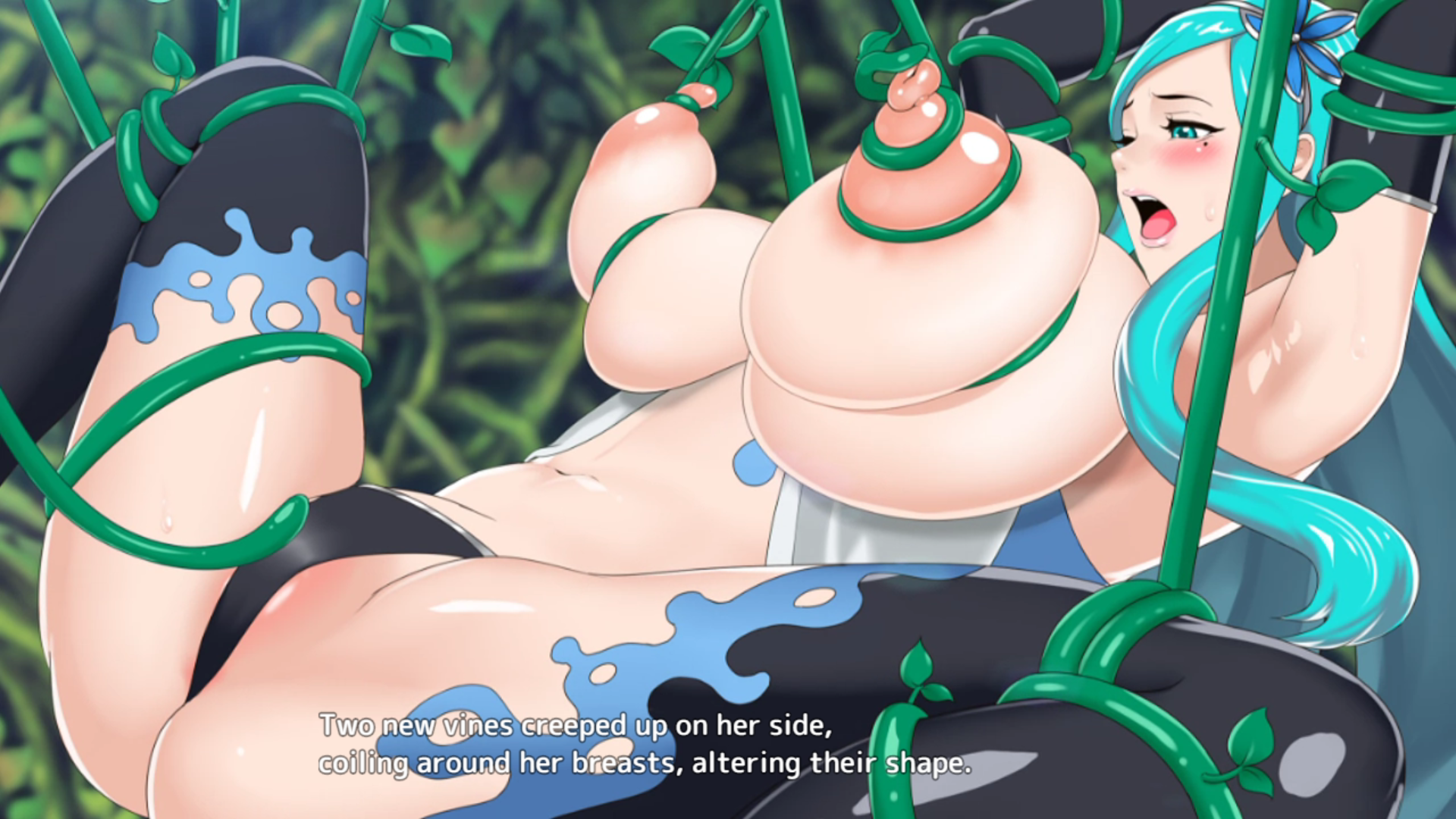
After being molested to a fountain-like squirting climax, the vines then let Sophie and Protag down, at which point the other girls exist again. They then look back up and say there’s a path up the cliff and they can climb on the same vines that just attacked Sophie to get up the cliff, at which point you just climb the now-inexplicably-inert vines and go back to fighting the manticore without a single comment about what just happened.
This is far from the only incidence like this – many of the sex scenes take place in plain view of the other characters, yet somehow the characters that are all trying to compete for Protag’s affection just patiently sit and wait for the sex scene to end while the girl in the sex scene is worried about how loud her voice is and how the others might hear when they’re 5 feet away and watching.
Now, if this were just a stupid plotless porn contrivance, that would be fine, but the problem comes when this game tries to then suddenly pivot away from stupid contrivances to something it actually wants to treat as serious. The game starts off with some rambling story about disappearing islands reappearing. There’s a scene where Bahamut, the king of dragons tells the “purified heroes” that they are needed to stop the Demon King from being resurrected and destroying the world, but it’s kind of hard to take that as anything but a sidenote when the characters were “purified” by standing around naked groping each other’s tits for the past ten minutes.
So much of the writing says “I clearly don’t give a shit, this isn’t anything more than porn and some dirty jokes, so don’t think about it” that when it then tries to pretend it’s saying something profound or try to turn the gropey exploitative relationship Protag has with a princess into a love story, it just cannot work.
Interface
This is an RPG Maker game. As such, I would strongly recommend using a controller if you have one, as RPG Maker was designed for controllers, and mouse-based point-and-click movement is awful when you’re trying to evade monsters. Also, you need to click twice on any menu choice, with the first one just getting the pointer to move to what you’re clicking, and only the second chooses that thing. Going all-keyboard is a better choice than mouse-movement, but the limited number of useful buttons means it’s more comfortable to just assign it all to a controller and lean back while playing.

Beyond that, the controls are fully customizable for keyboard and controller, and there are a wide array of customization options (including mid-game difficulty changing in case you screw yourself over with monster tier ups). My only real complaint is that the game is rather loud even when you drop the volume down to 10%, especially when you’re rushing battles and many characters talk over one another.
Gameplay Basics
So with all that out of the way… I actually really enjoyed the gameplay.
Island SAGA is named as such because it’s clearly cribbing notes from the long-running SaGa franchise that spun off from Final Fantasy II. With its level-less random stat gains through combat system, Final Fantasy II was as much a black sheep in the Final Fantasy series as Adventures of Link was. (However, not as much as Final Fantasy XI being an MMO, but since the higher-ups get to pick these things, it’s determined by the money.) Final Fantasy II didn’t prove popular enough for its lead designer to make the cut for numbered Final Fantasy games anymore, but he did get to make what would be the SaGa games on the side. (These were released as Final Fantasy Legend for Gameboy, and the Super Famicom Romancing SaGa are now being ported to Steam for their first release in English.)
While there’s apparently a new one that was ported to consoles in 2019, I haven’t played it yet, and the last original not-a-mobile-spin-off SaGa game I played was the fantastic Unlimited SaGa… released in 2002!
So what I’m saying is, maybe, after playing so many boring by-the-numbers RPGs lately, even a game that is just copying one of the more wild experimental games is hitting a real sweet spot for me, so I’ll happily ignore the fact that half my characters look like the Venus of Willendorf if I’m having fun with the combat system.
When you go into dungeons, monsters appear as sprites on the map that wander semi-randomly, but they tend to try to move in your direction, and they’ll travel pretty far from their original starting point to get to you. Touching them starts battles, and I get the impression that facing when you touch matters for whether you get “ambushed” or not.
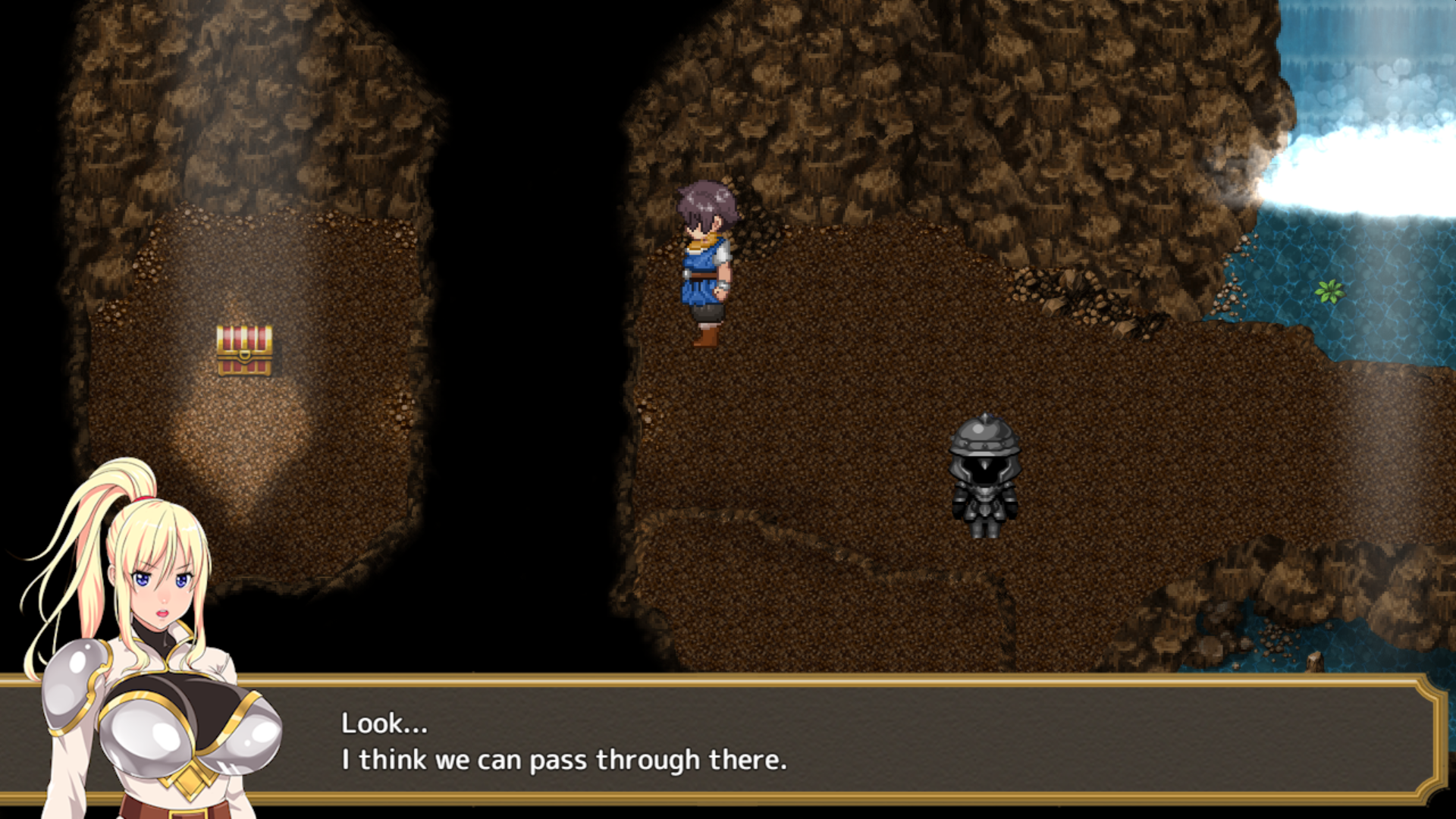
After defeating monsters, their sprite is removed for about 10 seconds of time on that screen. This timer stops when you are in the menu, fighting another battle, or even on another map – monsters will still wait to reappear until you get back on that specific screen.
Monsters are also divided by type, with there being beast types (which look like a fox on the dungeon screen) that start out giving you mountain harpies, but a couple tiers later have yetis, and a tier after that, have dangerous goblin champions. What dungeon you’re in only changes the type of sprites you will find, but if you run into a ghost-type monster, you’ll fight the same monsters no matter which dungeon you are in for any given tier of monsters you are on. This part’s important – the starting dungeon’s monsters will rank up in tiers right along with every other dungeon up to the last, so there’s no place that’s harder or easier (although some monsters in a given tier can be more troublesome, so you might want to hunt specific types of monsters).
I’ll cover this more in the next section, but what tier of monsters you are fighting is determined by how much you’ve already fought. If you stick around and grind in the beginner dungeon, it’ll suddenly kick you up a tier of monsters. The jump comes without warning, which can be a very jarring experience going from cakewalks to battles you need to keep reviving characters from one-hit-kills. (Although any healing item or magic revives characters in this game, and unlike most SaGa games, there are no life points to worry about losing.)
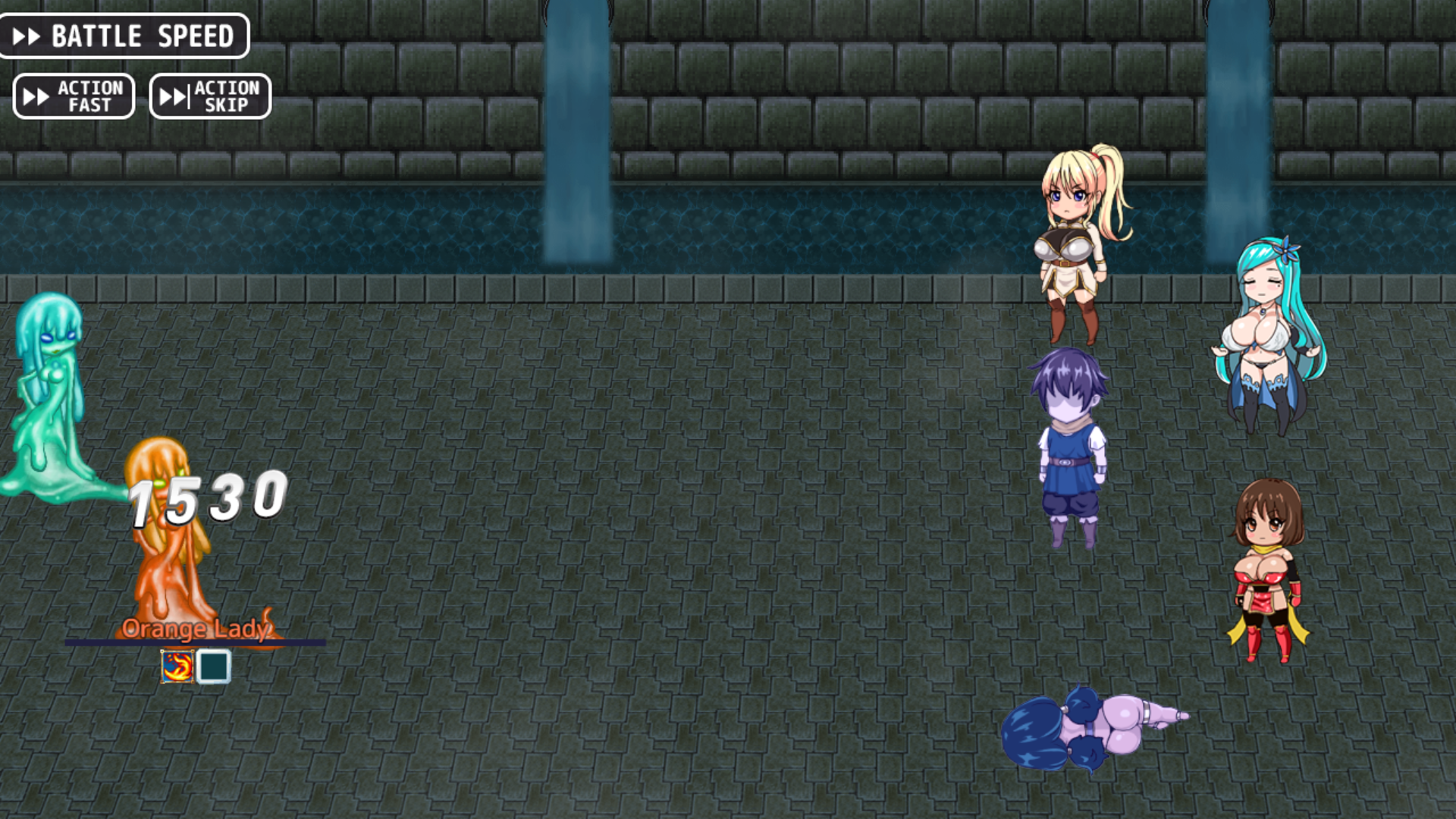
But with that said, while random mobs tier up, bosses are static. Yes, that’s right, you absolutely can and will get into situations where the common enemies are grueling 15-round endurance matches, and then find the boss that the characters react to with fear and one-shot those suckers because you took one of the earlier quests on later than the rest. Or, if you’re evading too many fights or trying to skip too far ahead, you’ll have impossible boss battles, whichever.
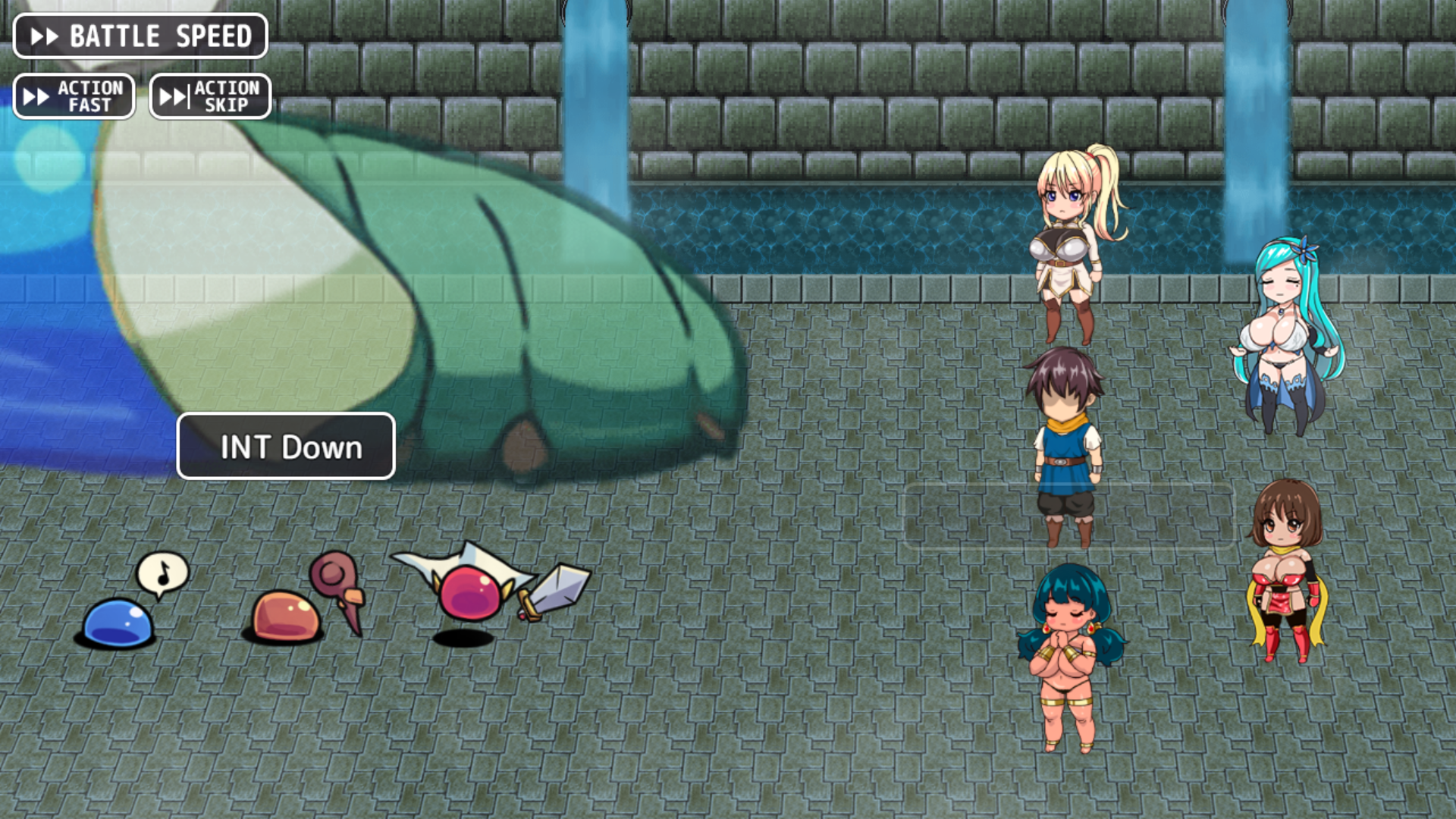
Combat rounds have you input all your character’s actions at once, with action order being determined by your AGI stat. As you go up monster tiers, it’s very likely for the monsters to suddenly all go first, and your best magic-users are also your slowest characters, so you’re often in situations where you have to choose to heal before knowing who’s going to take the next hit.
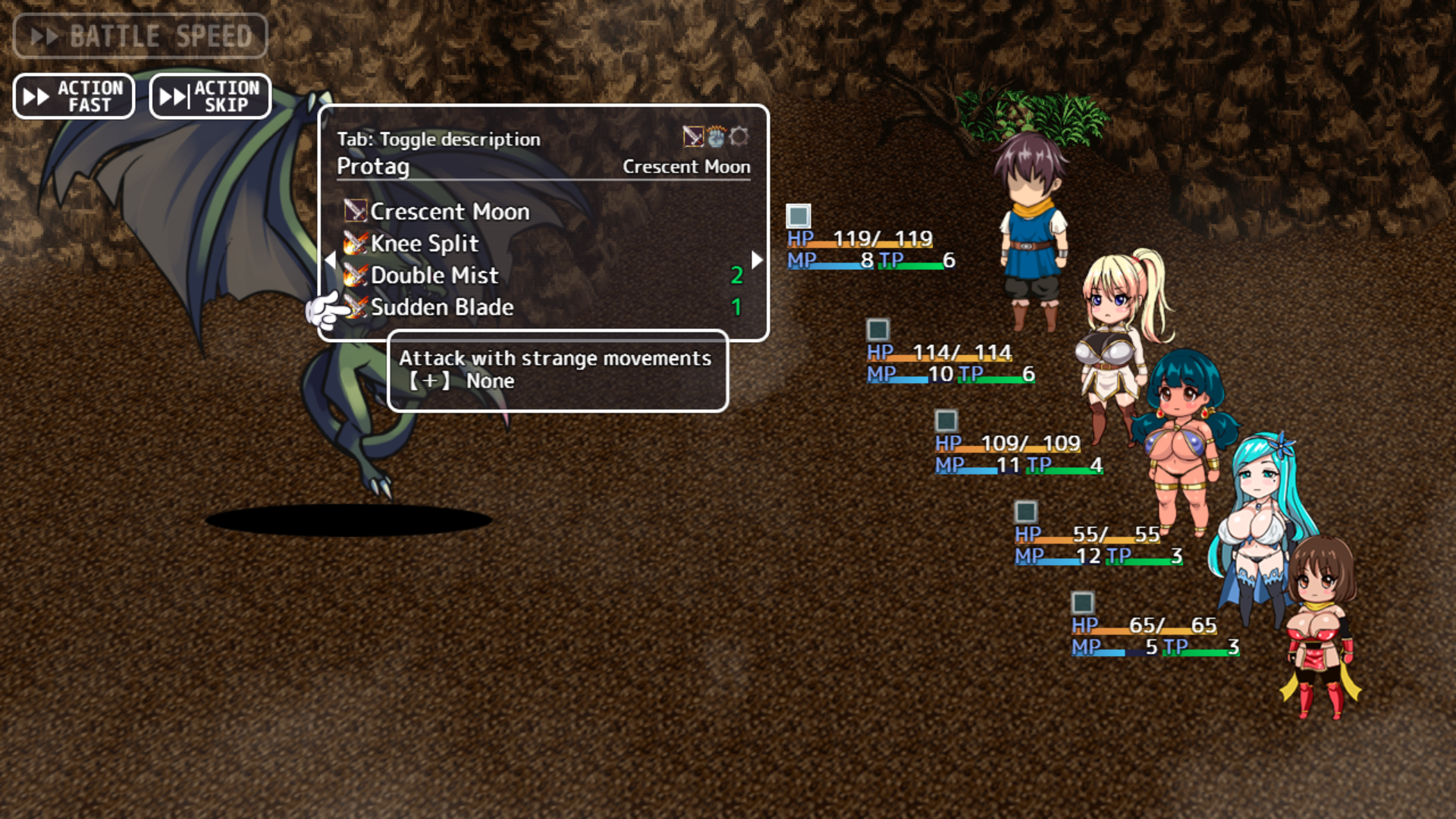
There are six weapon types (if you count bare fists as a weapon), and you have four slots per character, although consumables like potions take these same slots, forcing a choice between weapon variety and recovery items. Each weapon has their own skill level, although I’m not sure what weapon skill levels actually do.
Unlike most SaGa games, weapons have no durability. This means that if you get a rare and powerful weapon, you have it forever, which is nice, but it also means that any weapon less powerful than that winds up being garbage. That said, because max treasure equipment rarity seems tied to monster tiers, after the monsters go up a tier, you’ll have a new tier of equipment to search for to match them.
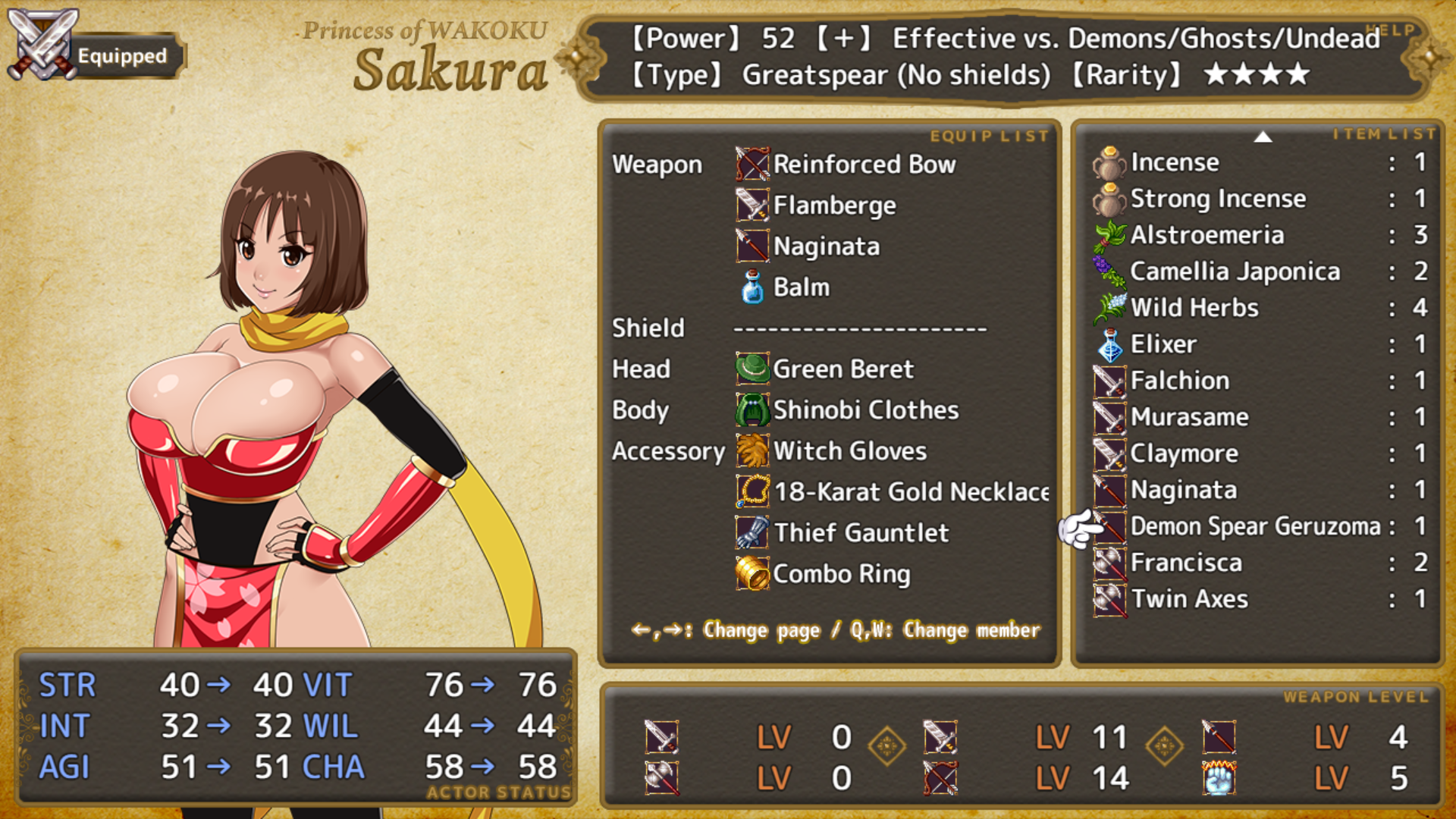
Magic also comes in six flavors, with light and dark added to the four Greek elements. Each character can only use one of each opposing pair, so you can have three types of magic for each character. Each element has six spells available at the start, including a basic attack spell that costs no MP so you can spam it. Every ten skill levels in a magic skill, you gain another two spells up to skill level 30, where you gain a single finisher spell. Each of the four princesses starts with an element, but you can change the spells out as you wish. I’m unsure if there is a character affinity for specific elements or what they are outside of likely preferring their starting element, however.
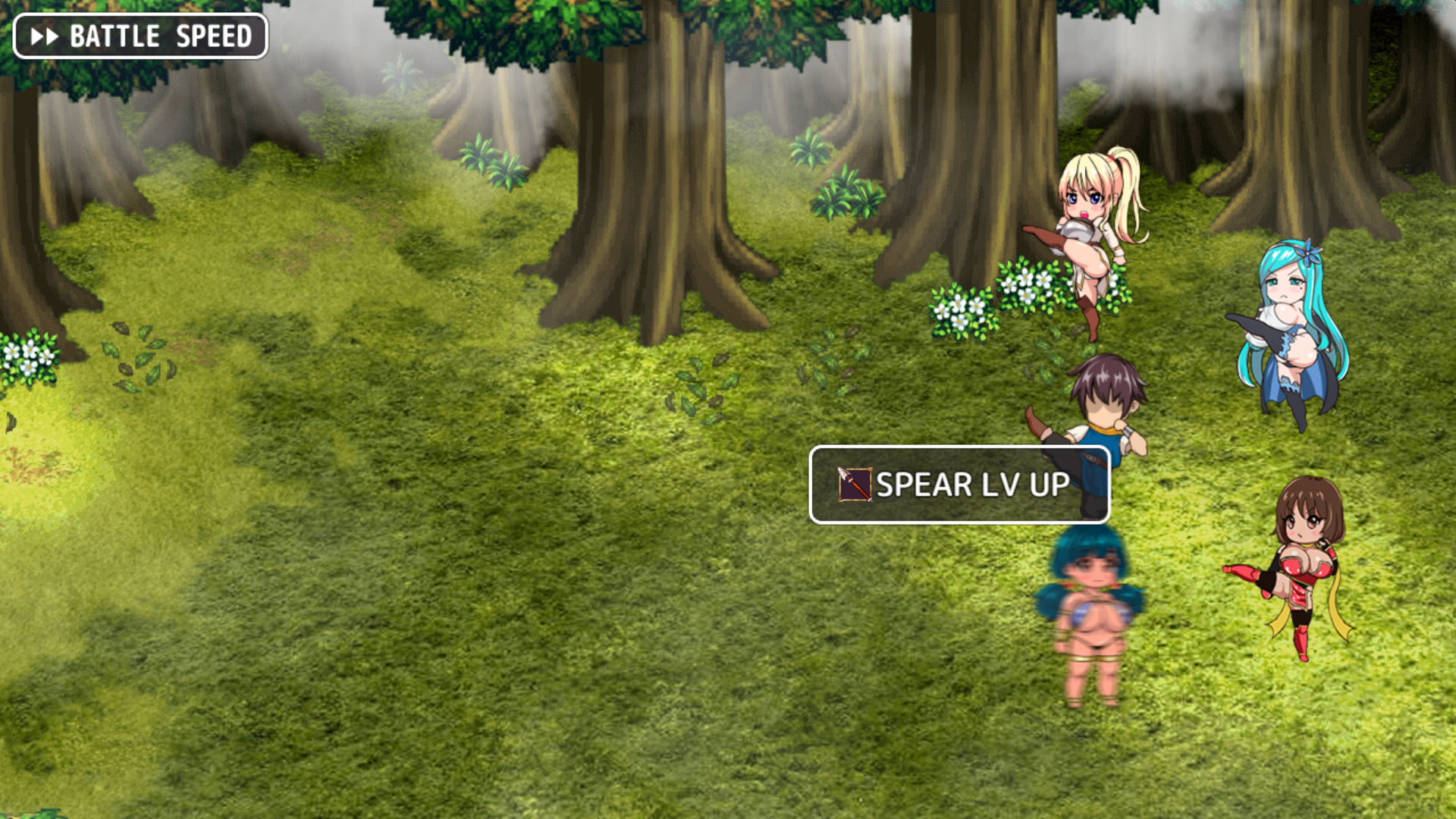
A key feature of the SaGa franchise is randomly gaining stats based upon how you acted in battle. If you only attack physically, you have a fair chance of gaining STR, but you’ll never gain INT without using magic. The more you act in battle, the higher your odds of gaining stats, so longer battles means you gain more stats more often.
HP recovers after every battle automatically and TP, which are used for skills, recovers every round. Your max TP seems based upon the number of skills you have (or possibly weapon skill levels, which would explain what those are for), and you regain a percentage of your TP every round. This means having high enough max TP allows you to use all but your most expensive skills every round with impunity.
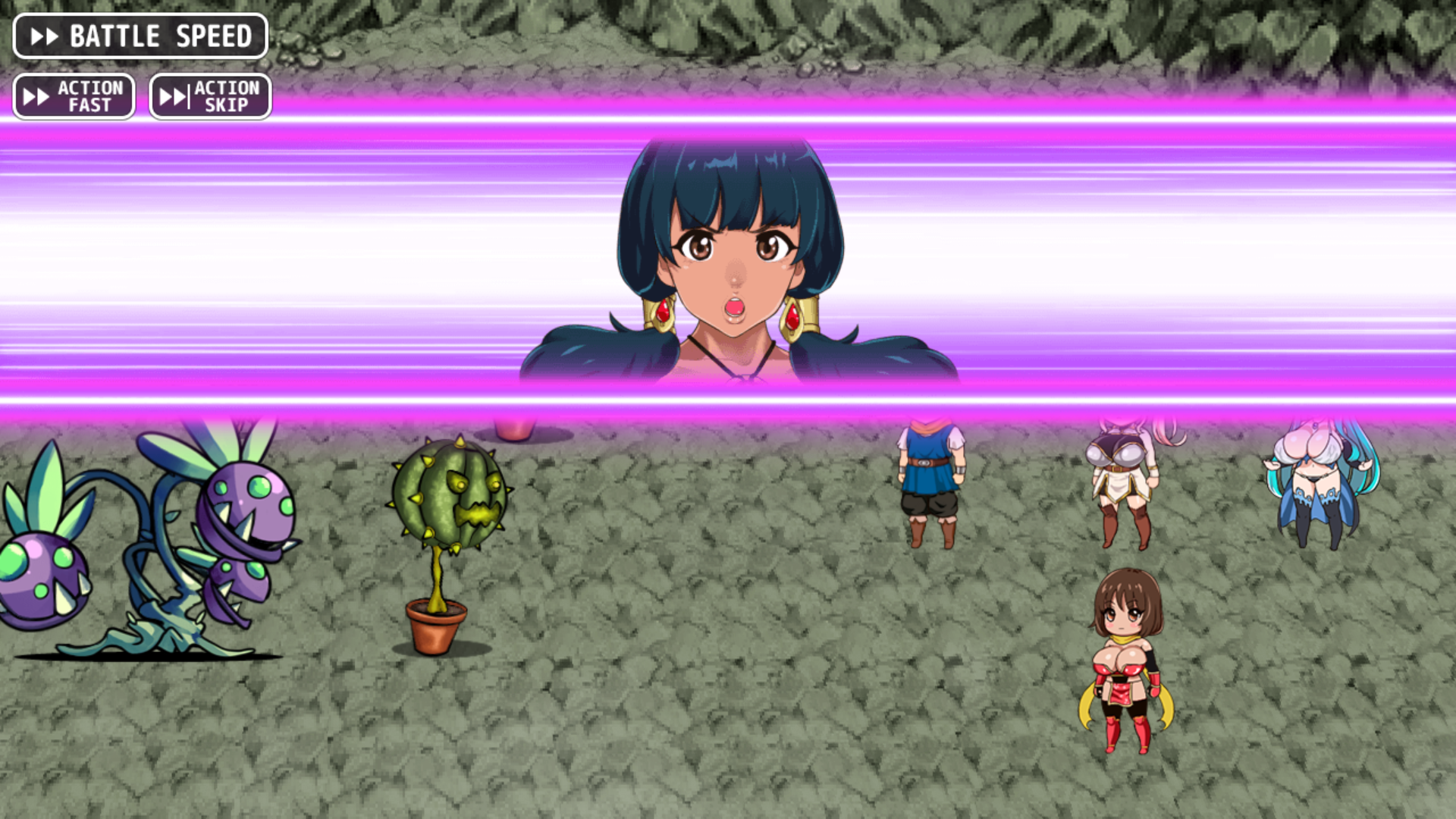
Combos are randomly activated and their chances to occur have nothing to do with which skills you use, although some accessories increase their odds of happening. Therefore, there isn’t a real strategy to look for skills that combo together to create a new skill like in some of the later SaGa games. As an amusing side note, combo names are formed by taking either the first or last half of a skill’s name and tacking them together in order, so a combo of fireball and light ball creates the combo… “fire ball”…
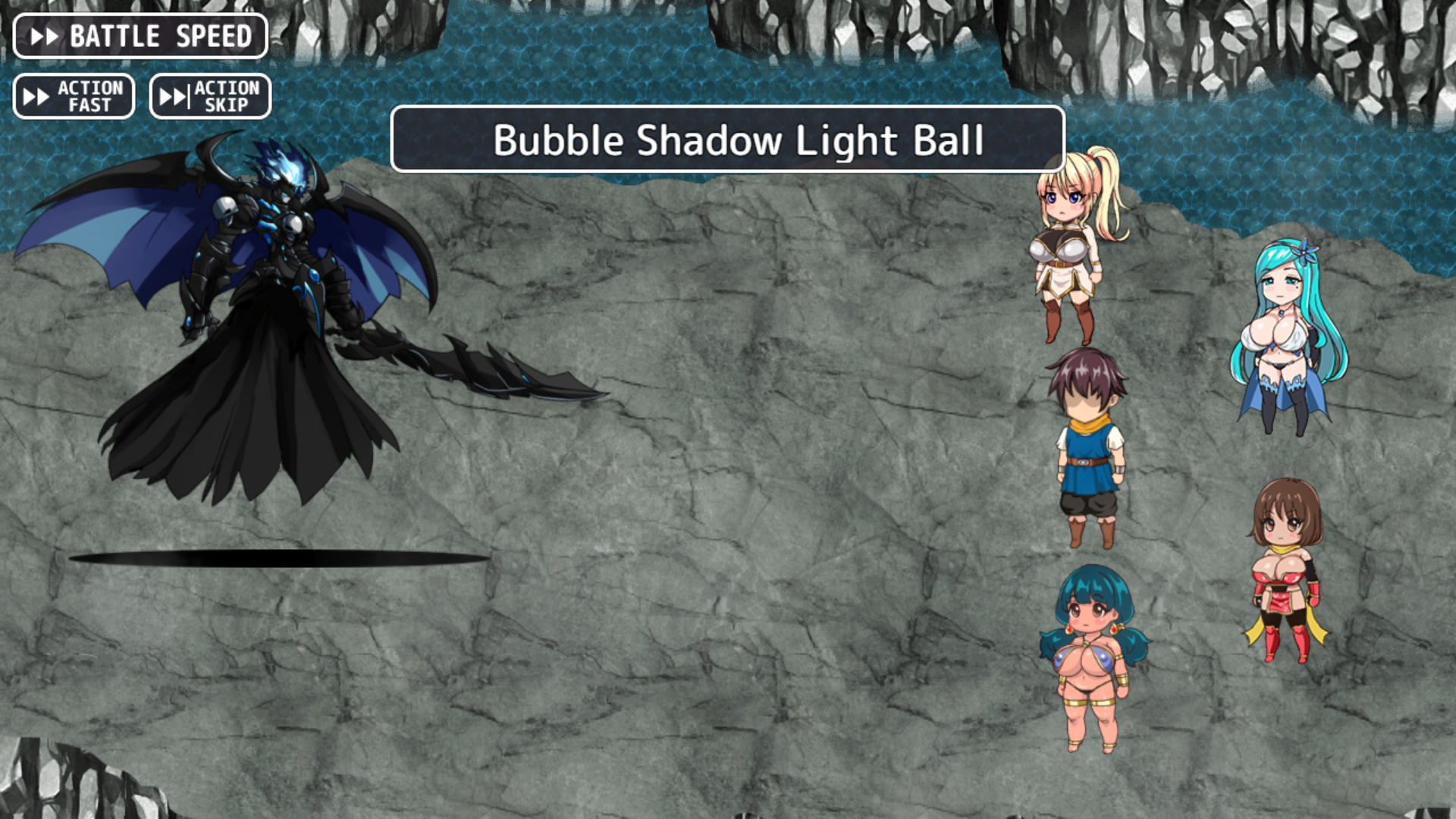
There is also a formation system. These need to be unlocked through quest rewards, but give bonuses to party members in specific locations. For example, the “Love Wall” is a standard formation wtih three in front and two in back where the back row is less likely to be targetted for attacks and have bonus defense. A more advanced formation plays into the interesting skill system, however, such as “Decoy” formation making the one person in the front ten times as likely to be targetted. This is a great move when facing powerful single physical attack enemies, because skills like “Parry” allow one party member to give up their action to completely nullify physical attacks on themselves, but is a useless waste of a turn if they aren’t attacked. Obviously, you need a formation that pushes all attacks onto a single member to make use of skills like that. Since upper-tier melee monsters start getting capable of one-hit-killing party members, having one member tank and the others attack is a very effective strategy.
One final feature I deeply appreciate is the inclusion of a mid-battle battle speed function. Pressing shift (by default) toggles the battle speed between hyper-speed skill animations to fast forward battles to both, and holding down the confirm button (default Z or Enter) further accelerates everything tremendously. A 30-second combat round can become a 3-second combat round! The game has cursor memory and holding down the confirm button rapid-fire selects all the skills you used last round, so you can blaze through battles at ten times normal speed if you are getting impatient!
There’s a strong incentive to powergrind in battles, but as I said back in the Amberland and Undead Darlings reviews, if the combat can get easy enough that it starts to get boring, the least you can do is make it quick enough that I don’t get bored getting back to the interesting parts!
Powergrinding
I previously mentioned that monsters have tiers, and that when you go up a tier, all the monsters are changed out for higher-tier ones. On the surface, this creates the kind of “rubber-banding” situation that was highly controversial in games like Elder Scrolls IV: Oblivion. Getting more powerful made enemies more powerful to match, so you didn’t feel like you’d gained anything, deflating one of the core rewards that creates a sense of progress players feel in a RPG. However, this system is slightly different in a way that allows you to game it…
I’ve not managed to pin down the exact mechanics simply by playing, but I highly suspect that this game either advances you through monster tiers based either upon total battles fought or upon total hit points gained (the latter of which was the way that the Romancing SaGa games worked). The game could also be based upon total stat gains, however, it’s mentioned that your chance to spark (learn new skills) is based upon your character hit points, and since that also was how things worked in Romancing SaGa, I lean towards HP being the determinant.
Hit points, along with all other stats, are gained randomly after battle, but the odds of gaining them goes up the more turns you take in battle. As far as I can tell, this can go up to 100%, because if I fight a very long battle with 20 or more rounds while spending several rounds each on physical and magic skills, I’m basically guaranteed to gain stats in at least 7 of the 8 stats for everyone, plus get at least one skill level.
Inversely, if you rush through an easy battle with a powerful weapon and kill enemies before the first round is over, the characters that didn’t get a go (which is almost always Sophie) gain nothing, gradually falling further and further behind as only the fastest characters gain stats.
This is where you can game the system: If you purposefully use weak weapons or the Ki Meditation skill or use non-damaging spells to prolong battles, you still increase in hit points, but you also increase in everything else just as rapidly. With four slots, you can give a character, say, one very powerful sword, one powerful axe, and a weak starting sword to practice with. When you get enough sword practice in, you can swap out the weak weapon for an axe to train that, but you can still have a powerful sword to kill dangerous enemies, and also still have a slot for potions. Since you’re more likely to gain HP than other stats (with different characters having a bias for different stats – Protag has the highest Str and lowest Wil gain rates), powergrinding like this can be the difference between having 30 Str by the time you’re at 300 HP or having 40 Str by the time you’re at 300 HP… Hypothetically. I didn’t really spend enough time sitting down with it to do the kind of testing needed to be sure.
Also, the “run away” command always seemed to work, although I didn’t use it much, and you don’t gain HP if you run. On the dungeon map, the monster will be shaded out and you can walk through it for the next two or three seconds, so you might also be able to just bypass every fight by running away.
Treasures and Savescumming
Treasures make a massive difference in this game to the point that they can literally make the difference between victory and defeat. A 100 attack power axe, for example, will deal about 2000 damage while a 20 attack power axe will deal 100 damage with the same skill, and this is a game where you can deal 0 damage if the enemy’s defense is high enough.
Treasures, however, are also randomized at the moment you open them. This means you can open one and get trash less powerful than your start-of-the game equipment or a legendary superweapon from the beginners cave. (I suspect your current tier sets a cap on what you can get at any point in time, however.)
Because it’s randomized at the time of opening the chest, you all know what gameplay technique that strictly rewards and encourages: SAVESCUMMING! Saving and reloading until you randomly get vital equipment can become basically mandatory if RNGesus isn’t already shining his favor down upon you.
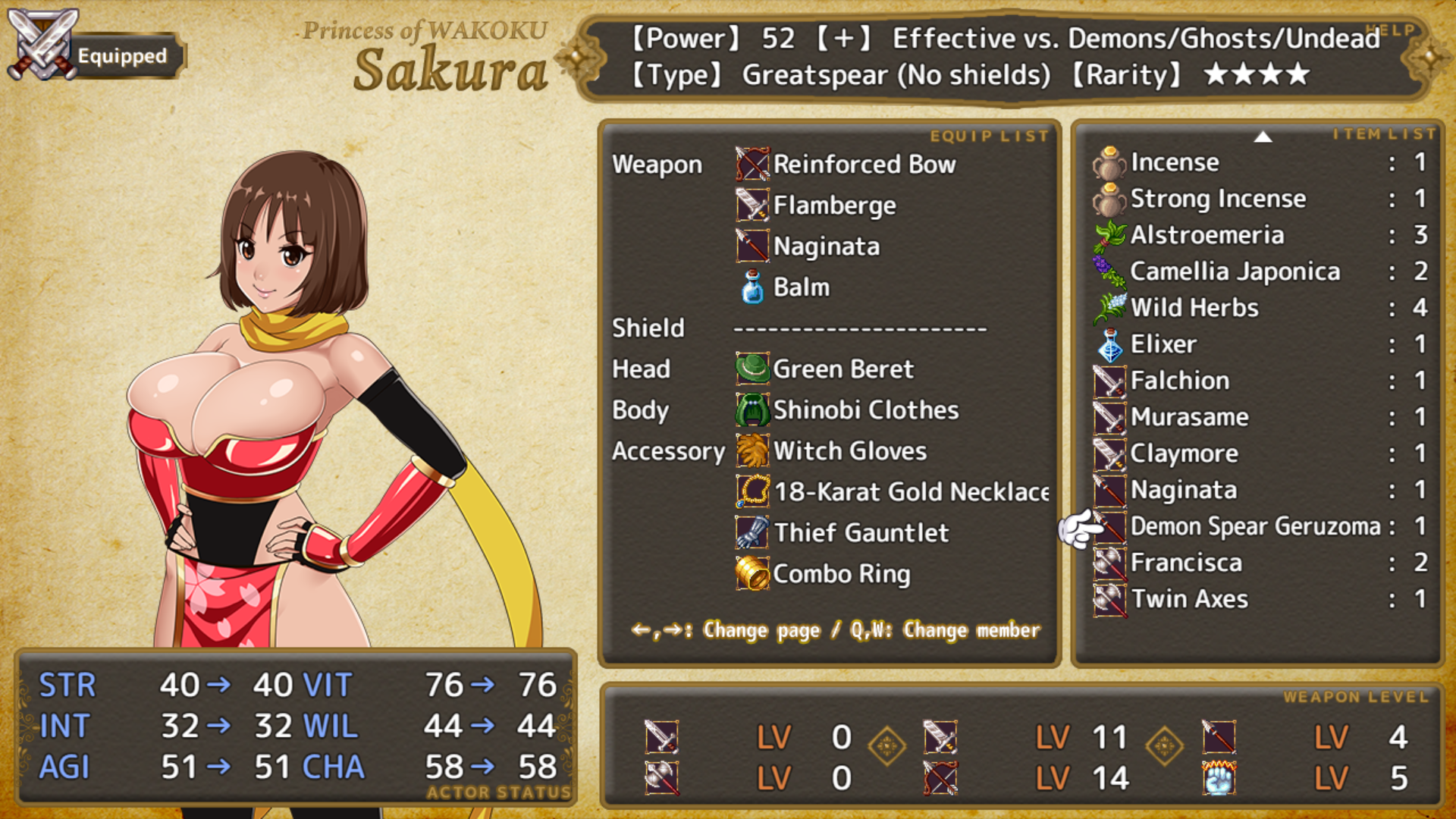
Furthermore, treasure chests respawn after a set number of battles. I counted out 12 battles between chest respawn. It’s worth pointing out this means that every chest respawns 12 fights after you opened it.
That is to say, if you aren’t savescumming by just reloading constantly, then you need to keep your fights to a minimum (dodging the enemies along the narrow dungeon paths) to avoid stat gain while running between every dungeon you’ve gained access to in order to loot those chests for another crack at the treasure table between every stretch of 12 battles.
Honestly, you’ll probably be happier just savescumming than constantly re-entering the same dungeons.
The Quests
The plot is largely advanced via quests. Not all quests are mandatory, but even the final boss is one of the quests.
One of the more frequent complaints among other players was that the quests (besides maybe the sex scene ones) are generally dull and repetitive.
For example, the first quest is literally to deliver a package for a literal postman. Most quests are “go to a dungeon you’ve already been to, but to a different side-passage to grab a different item that doesn’t exist until after you take this quest.” Quests in a chain make you go back to the same dungeon several times, and you can’t save time by picking up holy tree wood in Love Forest while you’re already there to get white apples even when it’s obvious when you see it that another quest is going to drag you back here.
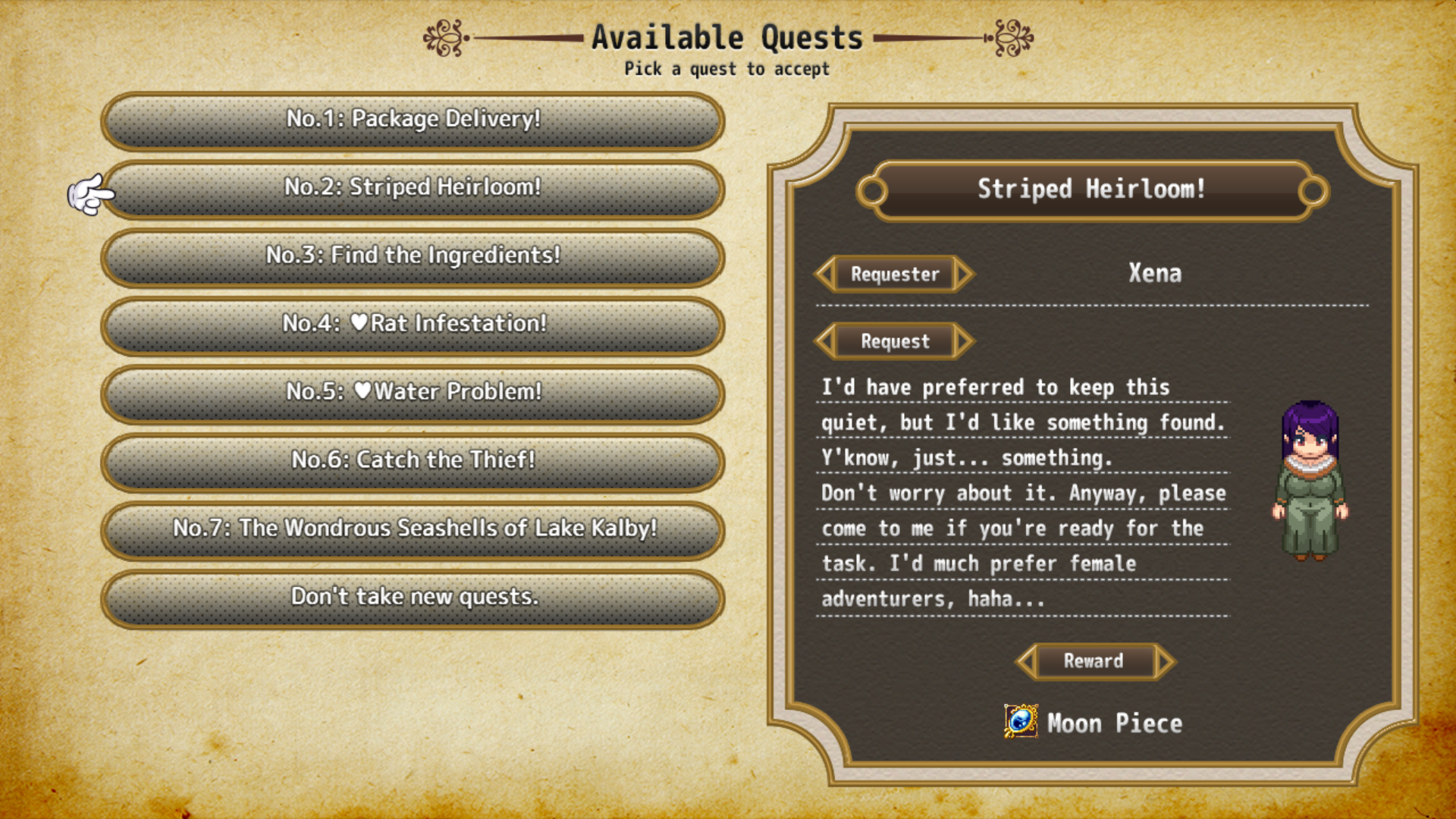
You’ll notice in the image above that some quests have hearts next to them. That tells you a sex scene is arbitrarily forced into the plot during those quests, which is where you get most of the “raped by monsters” or “a girl fell down so Protag molests her while she can’t fight back” events.
To go back to my complaint about the jarring way that things are written, there’s a massive tone problem with the way this game is written in getting you to care about anything going on, even when the game tries to be serious once in a while.
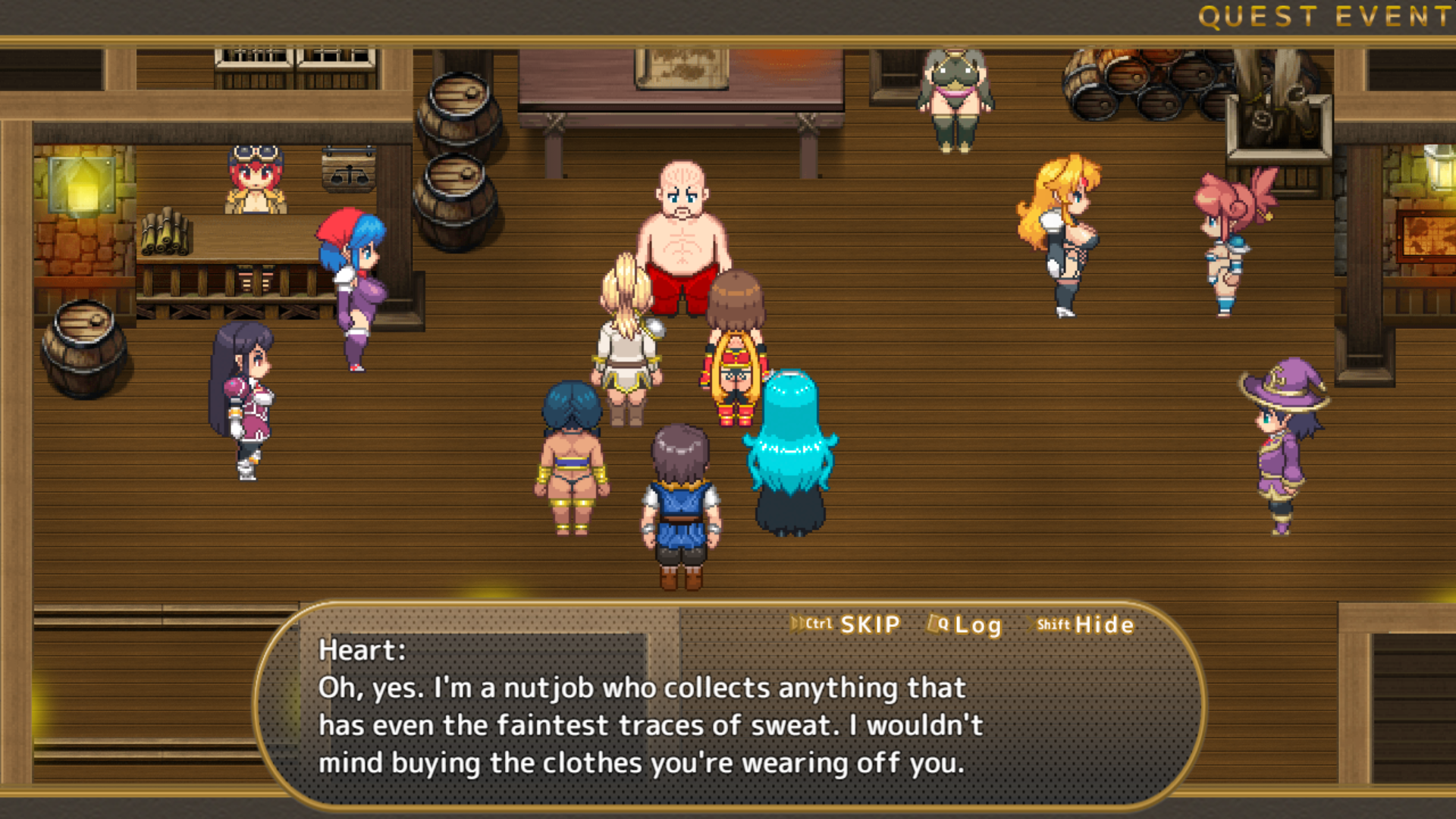
In the menu, there’s a flow chart to try and help you figure out what you should do next, however, it didn’t seem very reliable to me. Maybe some of the lines flow backwards or something, but I seemed to unlock some quests out of order.
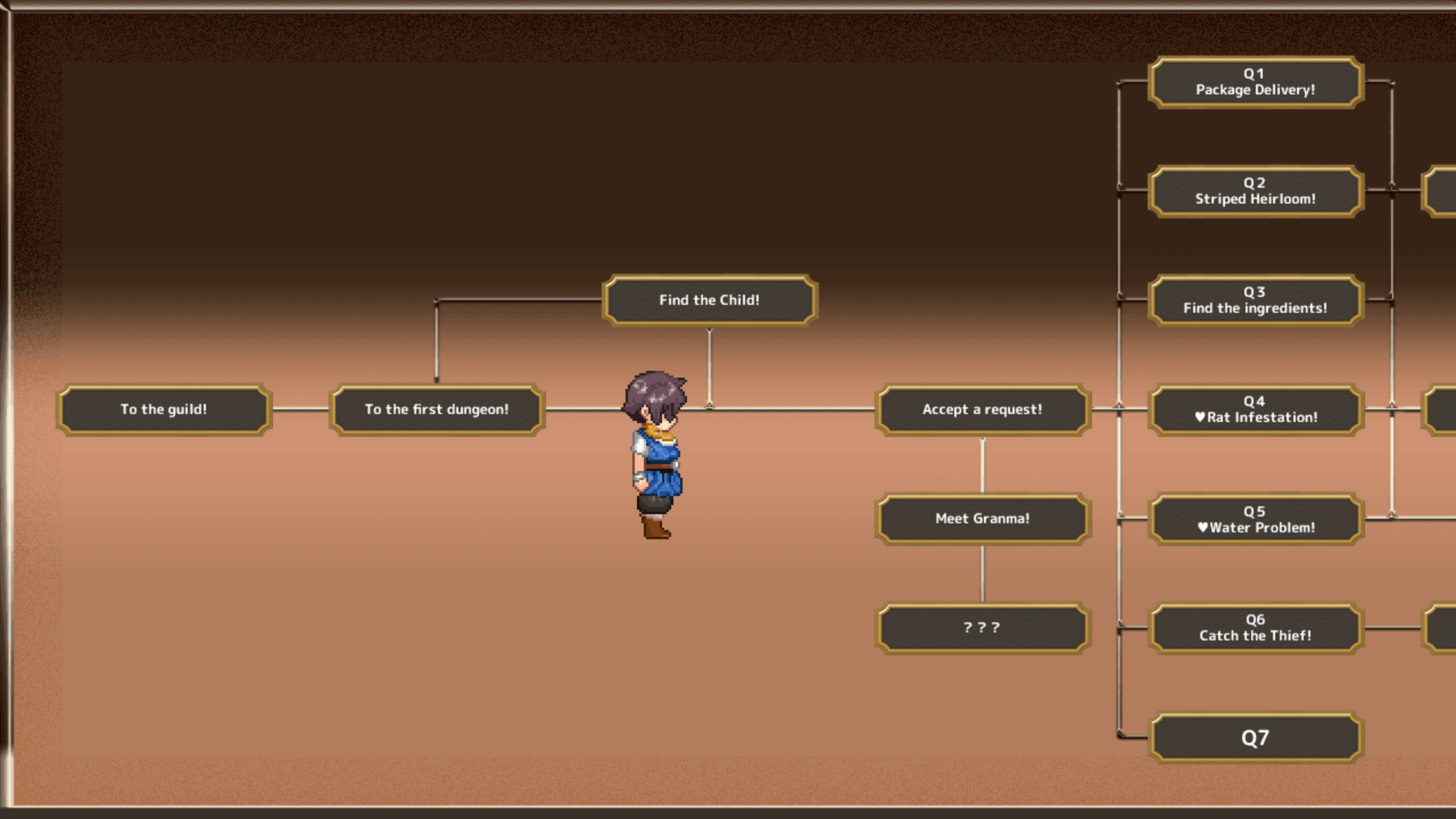
Art Style Nitpick Corner
Alright, I’ve been (mostly) good so far, and not gone out of my way to criticize things that aren’t to my tastes, but apparently are to some people, but I have some things I need to get off my (not at all absurdly oversized) chest. I’m not the sort of person who appreciates either oversized breasts in general, or the sort of art style that gets the annoyingly overused “T H I C C” mindlessly repeated all over it, but I’ve kept it mostly at bay to put it all in a single skippable section where I break down all my niggles about the artwork.
To start with the least controversial, one particularly amusing oversight was that there’s a girl in a red fur coat that was clearly a stock sprite that was altered to have the trademark absurdly huge breasts… but only while standing. When the character is walking, the girl goes back to being flat as the original sprite until she returns to a standing pose because the Dev clearly only bothered to redraw one frame (it’s the sprite used for the accessory shopkeeper), but forgot that in events where she walks.
A major problem is the way in which the spritework is used at wildly different zoom levels. Meaning, some parts of the game are heavily pixelated and others aren’t, often in the same shot, and it can look horribly out of place and distracting.
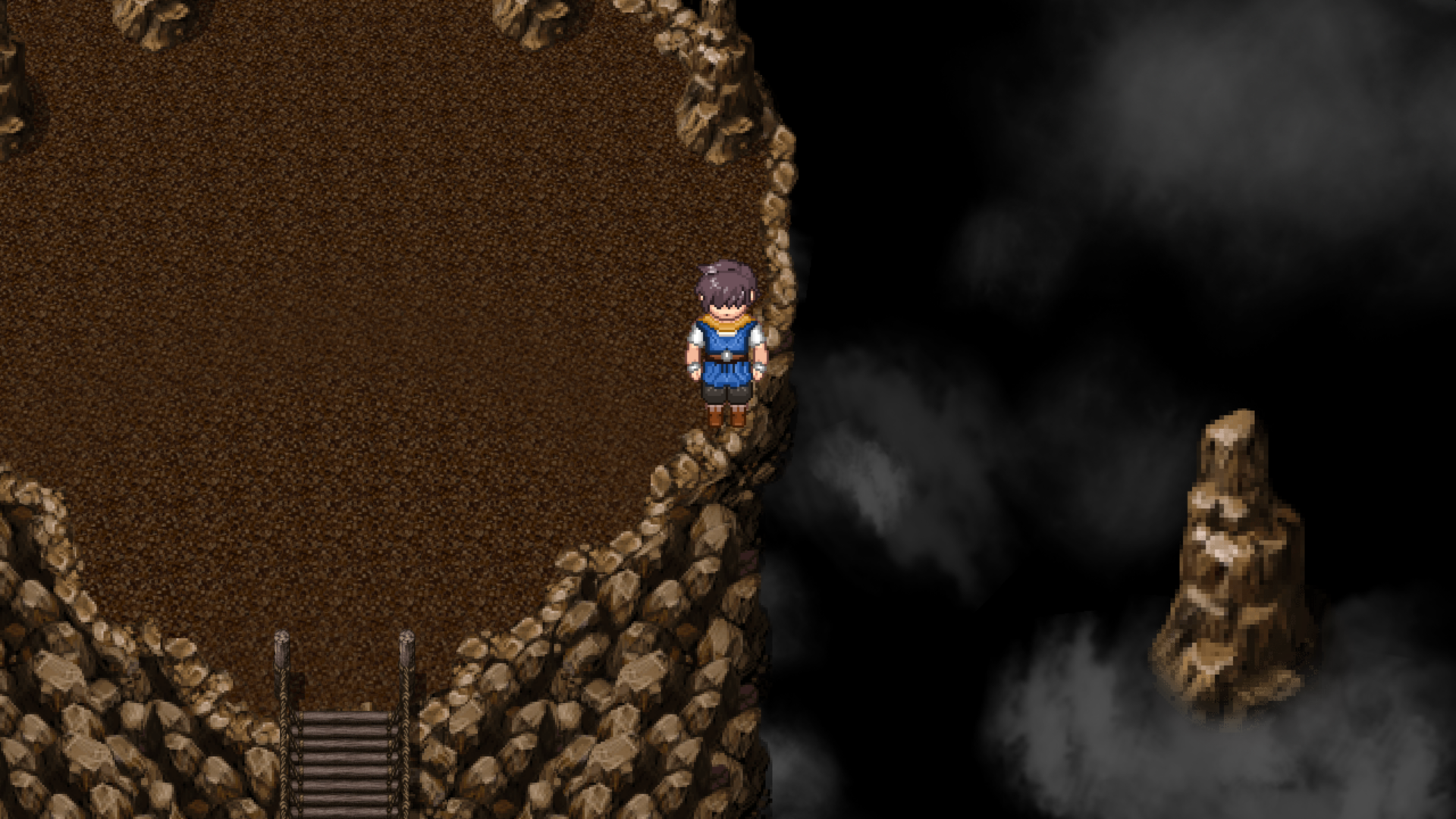
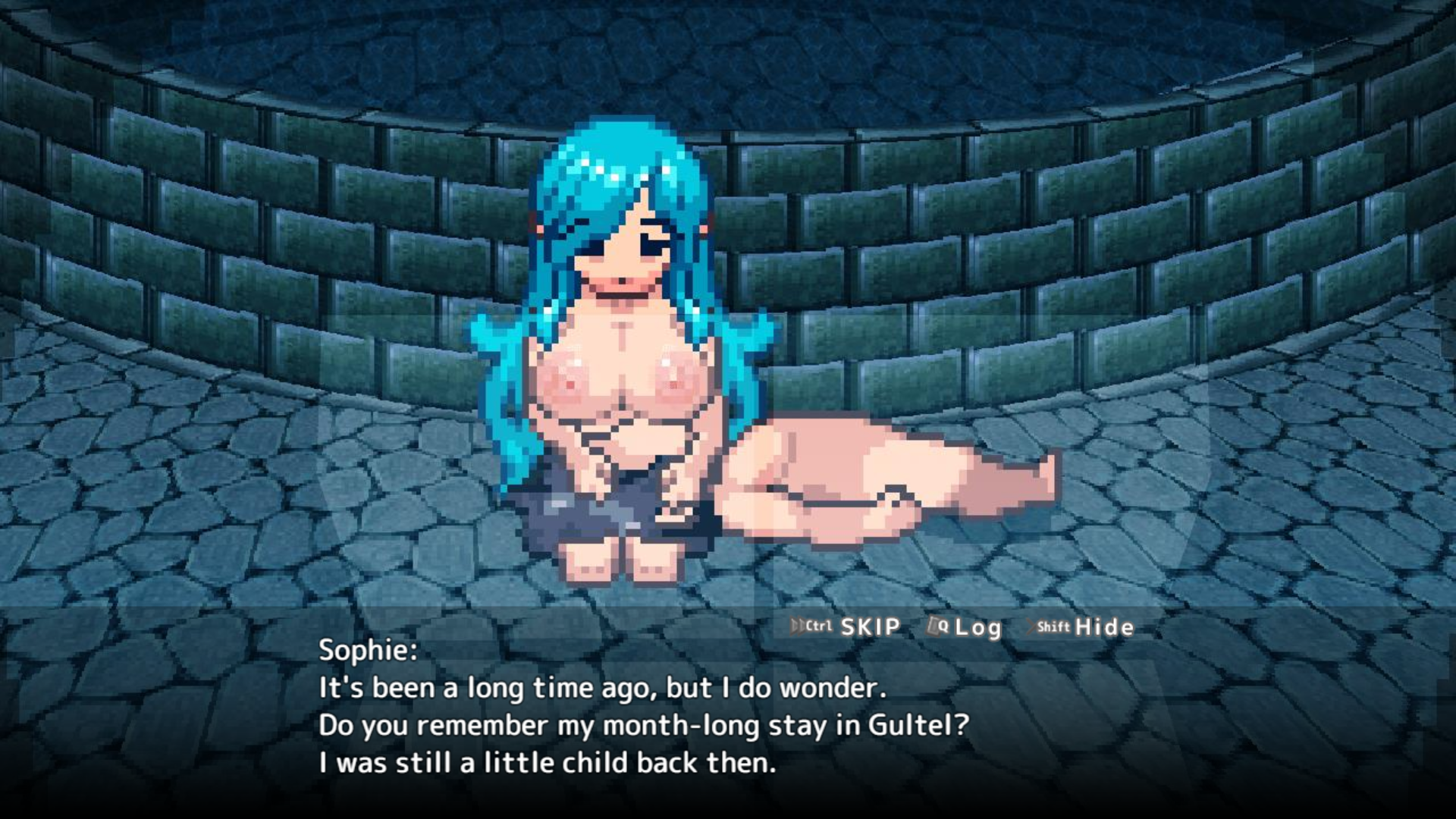
Iris is the strongest character besides Protag (because of course he gets to be strongest), but while you’d expect the knightly princess to have some muscle tone, her arms are some of the most spindly while Nadia, just for being the most curvy, actually has thicker arms than her.
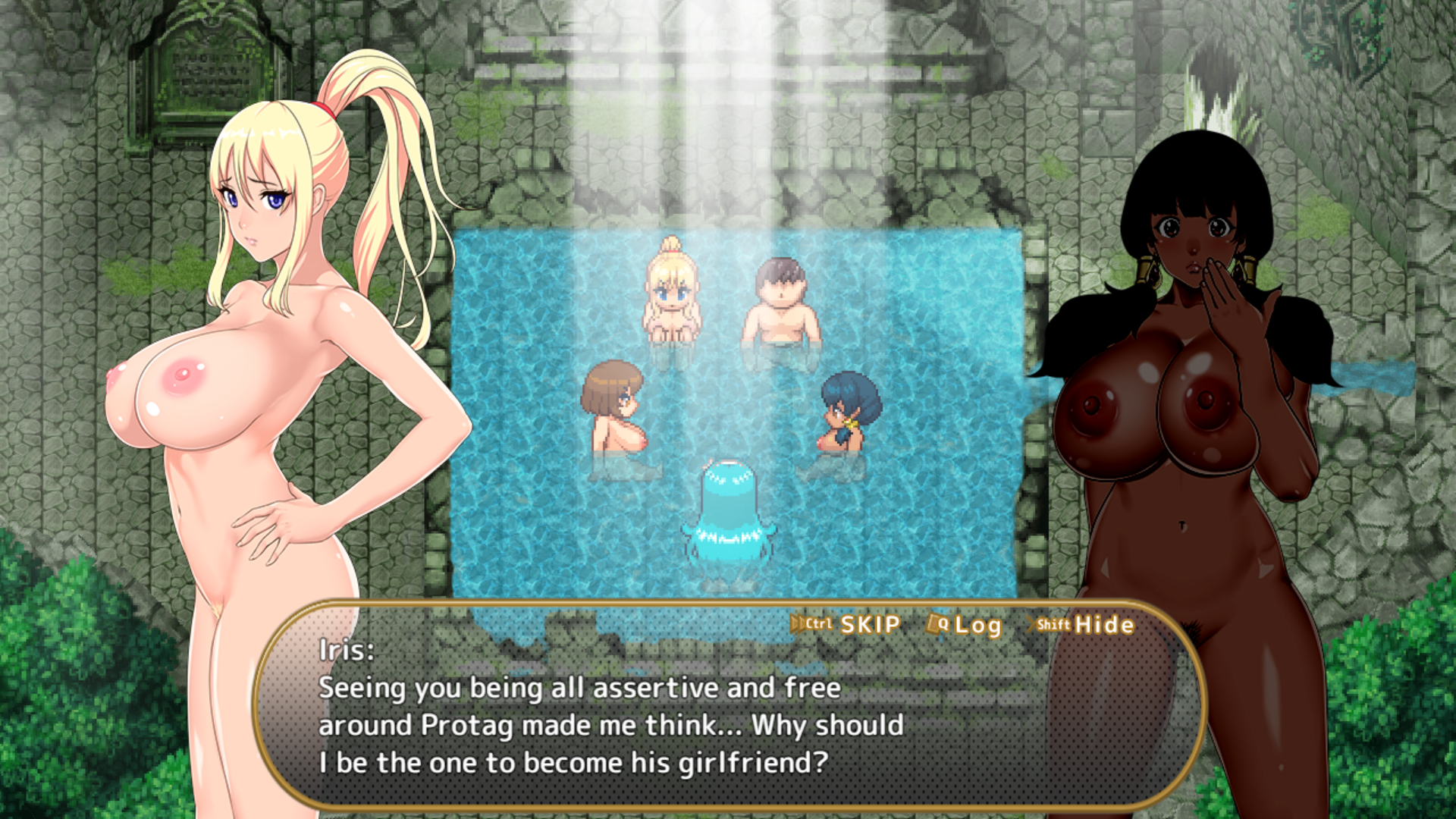
This is exacerbated by the fact that she has disproportionately tiny shoulders and hips.
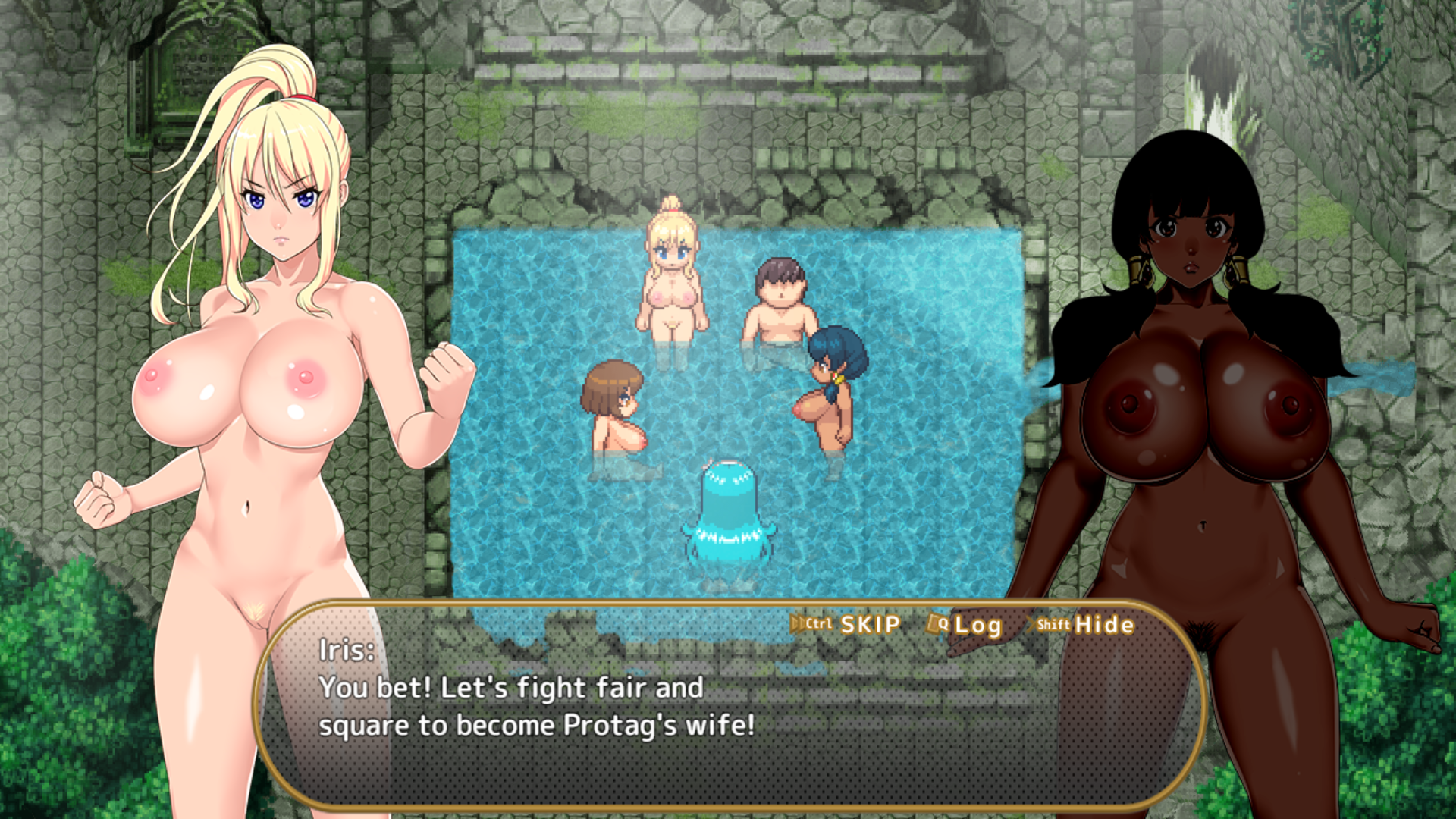
Or, if it would help to put things in a more direct manner, she doesn’t have enough ass to support those tits!
I’m not a big fan of the “T H I C C” style, but at least apply it equally so it has a cohesive form!
By far the most problematic character, however, is Sophie. Sophie has the largest breasts by far, at least two heads in size per breast compared to the single head in size of the other girls (although they change size depending on the scene), and in order to make them fit on her torso without dragging down below her belly button, the artist stretched her torso out until all sense of proportion is lost.
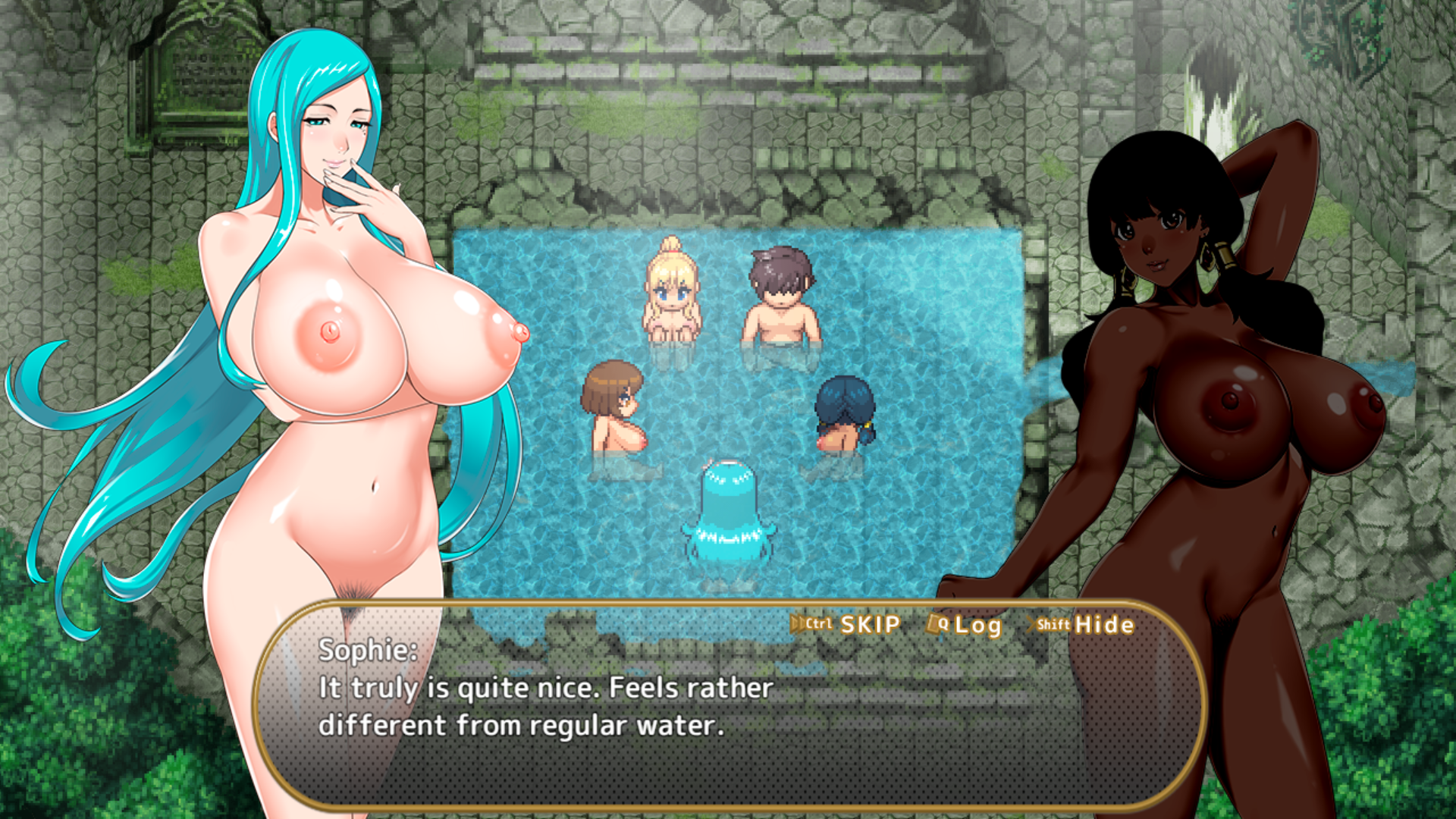
Even more than Iris, like a popsicle stick someone glued two golf balls to, Sophie’s body shape just doesn’t match the size of her breasts.
Sound and Voice Acting
Aside from being too loud even at the lowest setting, the voice acting is basically restricted to the four main girls. There’s a surprisingly wide variety of voiced lines, with basically every skill being called out by name by each character (besides Protag).
Aside from my personally finding Nadia’s high-pitched voice a little grating, nothing particularly stood out to me about the voice acting in a bad way. For what has to be a fairly low-budget project, it’s surprisingly high-quality work. It feels like such a waste to have something with a story one could connect to like Real Life Plus have worse voicework than this Developer’s Fetish game.
Verdict
Well, I don’t think I can sum it up better than my intro line: It’s an interesting combat system weighed down by poor writing and sexual fetishes hanging off it like oversized breasts.
It’s hard to rate this sort of game. I don’t want to pan a game just because it’s not my fetish when it clearly is the fetish of other people, as that’s not particularly helpful. (Plus, you can easily tell whether this is your fetish or not just by looking at a screenshot.) I also feel like rating a game like this purely upon the gameplay when it’s a tertiary feature of the game at best is not particularly helpful. The plot’s incapable of managing its tone, but not giving a shit because it’s “just porn, anyway” is basically the tone of everyone else involved.
Screw it, I’ll just go with a “Save” for the gameplay alone because I still liked that part, even if it’s also an acquired taste of an RPG system that turns many people who would otherwise like the porn off.

